
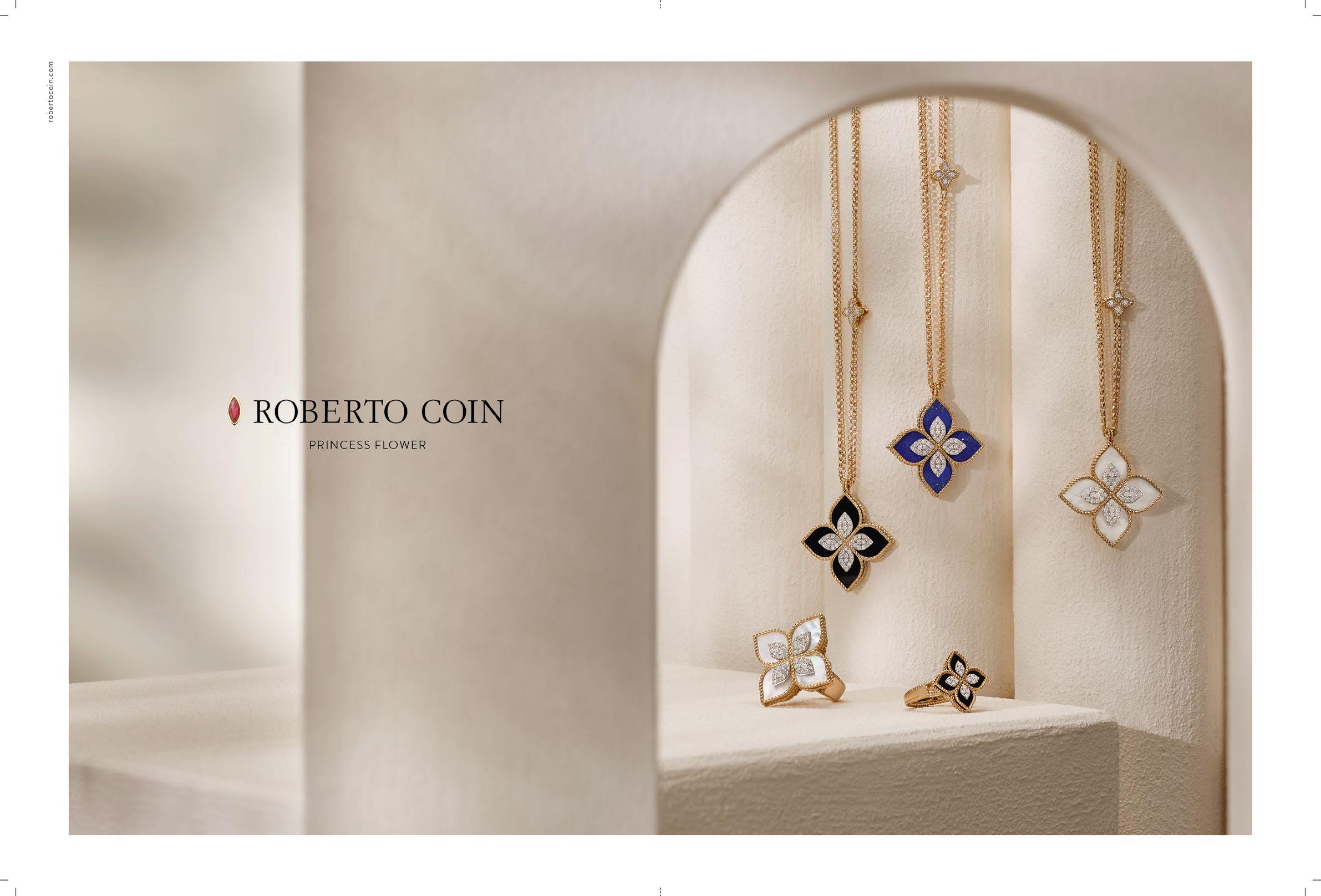





































It is not the usual - although more than legitimatedesire to enjoy the first glimmers of summer outdoors: there is much more behind the outdoor boom that is making outdoor furniture, sports accessories and green hospitality markets happy. There is a desire to leave behind two challenging years and return to fully enjoy things that we have realised we cannot take for granted: good times with friends, a cocktail on the terrace, a journey in total freedom. After all, there is also much more behind this desire to “go out”. If travel is always a metaphor for new paths, now we are looking for means and destinations as sustainable as possible, respectful of a new-found sense of adventure, and of that nature that we have come to love. This search for natural and sustainable materials also imbues the hotel industry, sailing, jewellery, fashion, and design. In short, inside and outside the home, we try to regain possession of the “beautiful and conscious” in every possible way; never as today had every form of art, excellence and craftsmanship appeared to us as an achievement. They are worlds that have always interacted by intertwining different codes and languages for the constant sake of creativity and authenticity.

02 | June22
EDITOR-IN-CHIEF Vincenzo Carbone
EDITORIAL DIRECTOR
Domenico Festa
domenico.festa@huesersmagazine.com
EDITORIAL COORDINATOR
Antonella Garello
antonella.garello@huesersmagazine.com
ART DIRECTOR
Fabrizio Majerna
CONTRIBUTORS
Paola Bertelli, Rosa Chiesa, Angelica Coluccini, Riccardo Ferrato, Didier Frevert, Cristina Griner, Simona Infantolino, Alberto Luti, Nicolino Martino, Davide Passoni, Samantha Primati, Donatella Zappieri

NAVA COMUNICAZIONE
Via Friuli, 19 - 20135 Milano - Italy
CONTACTS
editorialstaff@huesersmagazine.com
HUESERS IS PUBLISHED BY
PRODES ITALIA SRL
Via Sansovino, 6 - 20133 Milano - Italy +39 02.36580208 info@huesersmagazine.com
ADVERTISING
adv@huesersmagazine.com
Italy
Barbara Pedone
barbara@prodesitalia.com - +39 3286345142
Other Countries
Karen Tamayo
karen@prodesitalia.com - +39 3517466115
PRINTED BY
Denona doo
Getaldićeva 1 - 10 000 Zagreb - Croatia







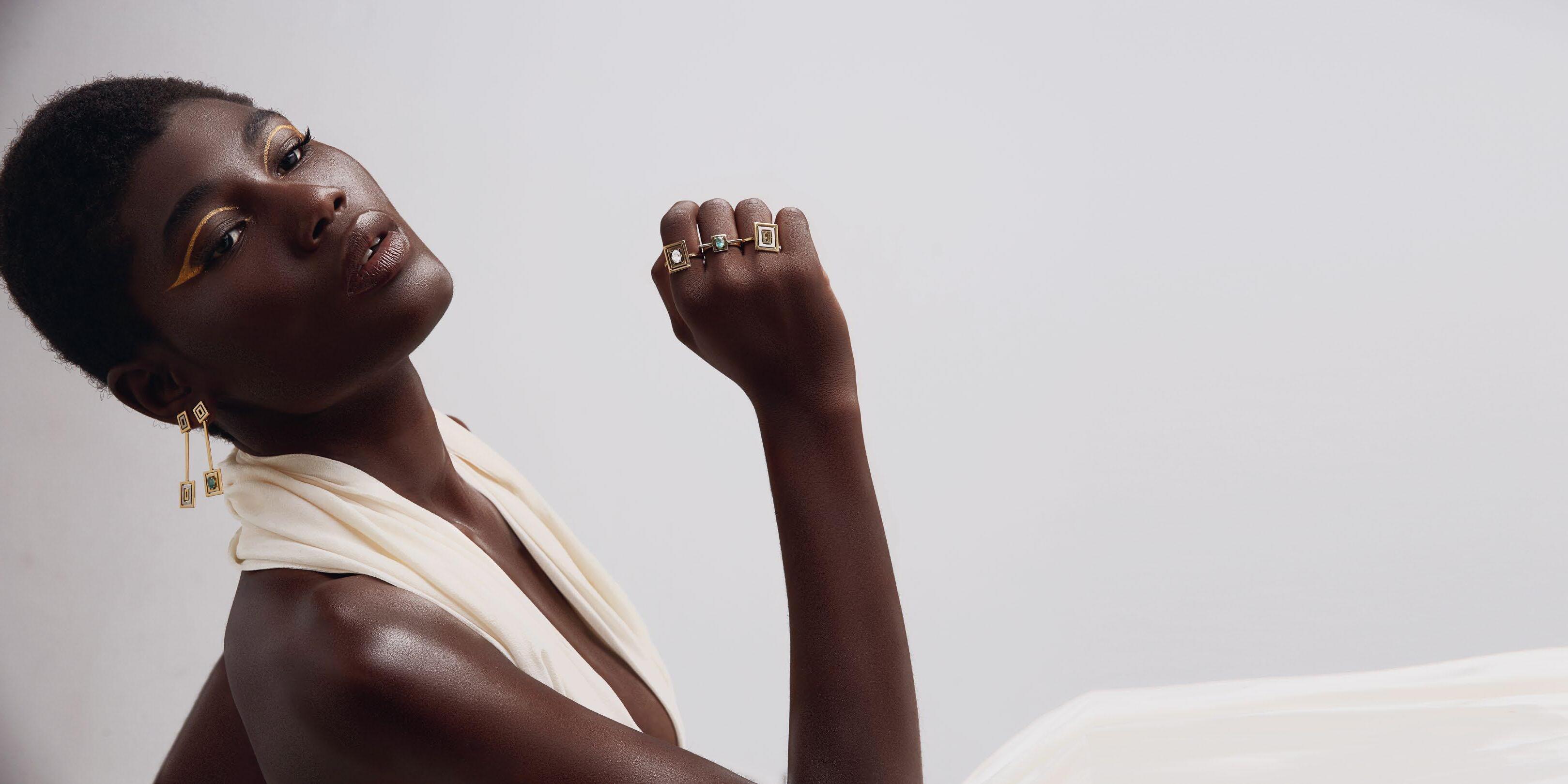


 by Donatella Zappieri
by Donatella Zappieri

This is how Gabrielle

«I’ve always had such a full life. I’ve always chased the time».
“Coco” Chanel describes her life. A quote and a statement still so relevant today, especially when we approach the extraordinary universe Arnaud Chastaingt, Director of Watchmaking Creation has been able to represent in the latest watch and jewelry creations.

Born in 1883 in a small French village, Gabrielle Chanel lost her mother at the age of 12, her father put her and her sister in an orphanage in the Aubazine Abbey, where she got the basic elements of education but above all learnt how to sew. Her career in fashion started with a job in a small hats and stocking shop and soon later developed further when she opened her first activity as a hat designer. In 1916 she was already a successful entrepreneur managing three stores with more than 100 employees. A master of courage and a hard worker, she liked to describe herself “a bee born under the lion sign”. A wonderful mix of totemic animals to inspire empowerment and self-esteem.
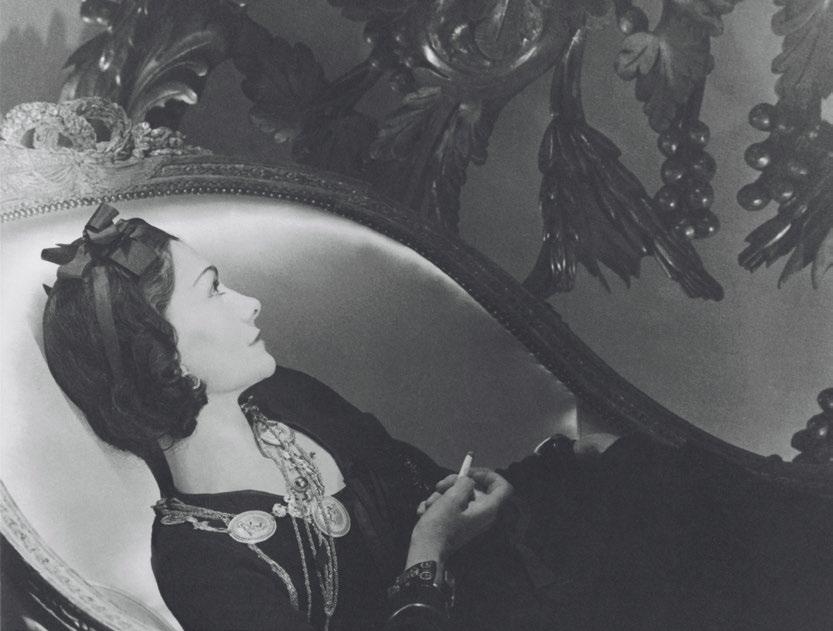
She created models and accessories that soon became iconic, emphasizing the way she would conceive women emancipation and her hate for stereotypes, whilst developing shapes and pioneering the use of alternative materials that are still today key elements of style and timeless chic for all women around the world. Her image is strong in our imaginary and some of her creations date back to more than 50/60 years, hence, when we see quilted leather or gold, black and white, beige, pearls, tweeds, chains, lions we immediately think of Coco and her wonderful world and moreover her love for freedom, allure and casual chic.
Today, in every new launch of the Maison, some of these iconic elements are strongly
represented aiming to a constant homage to Coco, her work and attitude.
As regards watch making, it was only in 1987 that Chanel launched the first watch line, called Première, that was followed in 1993 by the first Fine jewelry collection.
In 2000, the first J12 was released in black ceramic, once again a break-through not only as far as the mechanism was concerned but also the use of an unconventional material.
In 2022, at Watches & Wonders, Mademoiselle Chanel and the J12 watch met again in 3 exceptional creations, each limited to 55 pieces. The first one is “Mademoiselle J12 La Pausa”, La Pausa is a villa in Southern France that Coco Chanel decided to build and decorate when she fell in love with the area around ToquebruneCap-Martin. This villa became her “buen retiro” and was also the place where she hosted many important guests during the years when she was admired by the international jet set. This new watch interpretation welcomes the silhouette of Mademoiselle dressed in a Breton top and sailor pants, inspired by a photograph taken in her garden at La Pausa. For the first time, the Mademoiselle J12 is equipped with the Caliber 12.1, in an exclusive all-black version. In Mademoiselle J12.XS, Coco’s silhouette appears in the form of a figurine, entwined in white gold and black lacquer, topped off with a two-tone straw hat accentuated with a brilliant-cut diamond. The J12 Gabrielle Caliber 3.1 pays homage to the
iconic silhouette of Gabrielle placed on the dial, dressed in black and wearing her beloved pearls. A true keeper of time, Mademoiselle Chanel strikes a pose in a painting within a precious frame composed of a white gold bezel set with baguette-cut diamonds. Going back once again to Coco’s storytelling, her famous quote «If you’re sad or heartbroken, make yourself up, dress up, add more lipstick and attack» becomes the motto of the Haute Horlogerie Red Edition collection, emphasizing the red as one of the Maison’s five signature colors, alongside white, black, beige, and gold. Gabrielle loved the power of red when used as an accent. Red for boosting your confidence, for asserting yourself. Red as a detail to highlight the structure of a jacket, as a feature to accentuate the lining of the iconic 2.55 handbag. For the newly launched collection, exceptionally, red becomes the signature hue of Chanel timepieces.
Arnaud Chastaingt declares: «As a stylistic device, I have used it on three Haute Horlogerie creations. I like the boldness of
THE 2021/22 MÉTIERS D’ART COLLECTION
a movement made up in red, the sensuality of the marriage of beige gold and rubies, the authority of a glossy red strap against a wrist. There is nothing faint-hearted about red! It has an uncompromising elegance». To further celebrate the key attention to details and the devotion to preserve métiers d’art, all Chanel watches are carefully manufactured, developed and assembled by the Chanel Manufacture at La Chaux-de-Fonds, Switzerland.
In J12 X-Ray Red Edition Chanel the concept of transparency is highlighted where the case and bracelet links are cut from raw crystal sapphire. The J12 X-Ray Red Edition Rouge reveals its curves and those of its movement. The J12 silhouette remains unchanged, but the accent on red adds a note of contrast to the look. Symbols of life and passion, the rubies accentuate the unique and sophisticated character of this timepiece.
There is another essential feature of Gabrielle Chanel’s stylistic universe: the button. In the new edition of the Mademoiselle Privé Bouton


we open the doors into her intimate world as a showcase, revealing the symbols that were so dear to Mademoiselle and the objects with which she loved to surround herself.
Realized by the hands of the finest artisans, this collection is an extraordinary expression of virtuoso craftsmanship and a celebration of métiers d’art, remaining faithful to outstanding artistic skills and exceptional savoir-faire. The final homage to this never-ending storytelling and incredible universe are two outstanding high jewelry pieces. Mademoiselle Privé Coromandel Long Necklace with the onyx dial decorated with miniatures in 18K beige gold (a special galvanic developed by the Maison) and set with 50 brilliant-cut diamonds. The back of the onyx dial is embellished with the profile of Gabrielle Chanel sculpted in 18K
beige gold. The Mademoiselle Privé Cage Long Necklace is in yellow gold, pearls and diamonds. At the end of the chain, two birds sit opposite each other in a cage set with diamonds. The dial in yellow gold and diamonds is revealed beneath the cage.
After admiring all these creations there is even more expectation regarding the discovery of the new High Jewelry collection celebrating the 90th anniversary of Coco’s first collection that will be unveiled in Paris during Haute Couture show in July 2022.




 Parmigiani Fleurier
Parmigiani Fleurier

«The world is a book, and those who do not travel read only one page».
Saint Augustine
Many brands presented watches with GMT or World Time complications, the tools for globetrotters who like to move with dynamism and elegance. The GMT function allows the local time to be displayed by means of the normal 12-hour hand and the time of the place of origin by means of an additional hand that makes a single turn of the dial in 24 hours, typically arrow-shaped and of a different colour than the 12-hour hand. For the most part, GMT time is read via the 24-hour bezel or flange. The World Time function, on the other hand, displays the time zones on the flange or dial, with the names of 24 cities around the world and an hour disc rotating with the hands. This complication, invented just under a century ago, has given rise to extraordinary watches. The master of the World Time is Patek Philippe, which in Geneva amazed with watches such as the Universal Time Ref. 5230P-001, which for the first time combines a platinum case with a blue dial and strap, with the centre of the dial embellished with a circular guilloché pattern. The High Craftsmanship Universal Hour Ref. 5231G-001 has a Grand Feu cloisonné enamel map in the centre of the dial, depicting Oceania and South-East Asia. The new Travel Time Annual Calendar Ref. 5326G-001 is distinguished by a date indexed to local time, which changes back or forth when the time zone is adjusted.
The Arceau Le Temps Voyageur by Hermès is a poetic interpretation of the World Time: the complication is truly vagabond because the “travelling time” mechanism, developed exclusively for the brand, has a disc-shaped display of the 24 time zones, like a satellite orbiting on a fantastic map, designed on the dial and imagined by Jérôme Colliard for the brand’s “Planisphère d’un monde équestre” scarf. Jaeger-LeCoultre’s Master Grande Tradition Calibre 948 has a translucent lacquered and guilloché gold dial with a champlevé enamel decoration representing the globe as seen from the North Pole; its flying tourbillon undertakes one complete rotation of the dial in 24 hours. Montblanc takes us by the hand on a journey around the Earth with the 1858 Geosphere Chronograph 0 Oxygen and its World Hours displayed via the rotating northern and southern hemispheres in relief at 12 and 6 o’clock. There is no oxygen inside the case: the watch will be on the wrist of Nepalese mountaineer Nirmal Purja, the brand’s ambassador, in his attempt to climb Everest without the use of oxygen.
Aesthetically less appealing but more practical, the GMT function was brought to Geneva by Tudor with two watches from the Black Bay collection: Pro and GMT steel and gold. The first is more masculine, the second more elegant; the Pro has a 39 mm steel case and a
Travel is part of the human dimension, and an invitation to travel was the Watches and Wonders exhibition, which brought together the biggest Swiss and global watchmaking brands in Geneva at the beginning of April.




brand new look for the collection, with a bright yellow GMT Snowflake hand; the GMT has a 41 mm steel case and the whole is softened by touches of yellow gold on the bezel, crown and bracelet. Then there was the brand who produced the first GMT watch and turned it into an icon, Rolex. At the show, it presented a stroke of genius for the GMT-Master II collection, destined to become a must-have for collectors. In the watch, the crown is located on the left side of the case, a move that required re-engineering the movement and modifying the precision testing process for some final checks. The date window and lens have also moved and appear at 9 o’clock. The black and green bezel completes the look of a watch that has already been the talk of the town and will continue to be the focus of dreams, not only for travellers. Blue, on the other hand, is the distinguishing feature of Grand Seiko’s Evolution 9 collection, the chronograph with GMT function whose seconds hand, thanks to Spring Drive technology, has a fluid movement that recalls the natural flow of time. With

the Tonda PF GMT Rattrapante, Parmigiani Fleurier interprets the complication with two superimposed hour hands, one in rhodiumplated gold and the other in rose gold. When the push-button at 8 o’clock is pressed, the upper rhodium-plated gold hand dedicated to local time moves forward, revealing the rose gold hand showing the time at home. Once the second time zone information is no longer needed, pressing the rose gold button integrated into the crown repositions the hands on top of each other: a user-friendly complication in keeping with the spirit of the brand.


Outside Watches and Wonders, Dolce&Gabbana gave travel a meaning in tune with its mission to enhance and defend Italian-made products. For the first time, it showed together the pieces of the Manifattura Italiana collection, a grand tour through the cities of art of the “Beautiful Country”, interpreted in unique watches. The engineering accuracy and precision of the movements, hand-assembled by master watchmakers in Geneva, are Swiss, the creativity in decorating cases, dials and bracelets is Italian, and all this is expressed in the six models of the collection: Milan, Rome, Naples, Palermo, Venice and Florence. Dreamscapes and fun instead form the idea of journey that Gucci has staged with the Gucci Wonderland event in Geneva. A journey through childhood emotions and memories, in a real and virtual, luxurious and playful fairground, which was the setting for the presentation of five new high-end timepieces. Pieces in which the most refined watchmaking complications appear alongside rainbow-like gems and celestial wonders, in a collection perfect for both lovers of worldly elegance and globetrotters always on the go. And the invitation to the journey is pure joy.
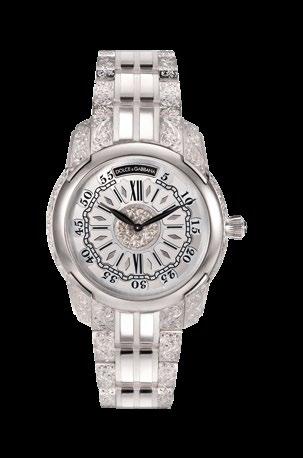

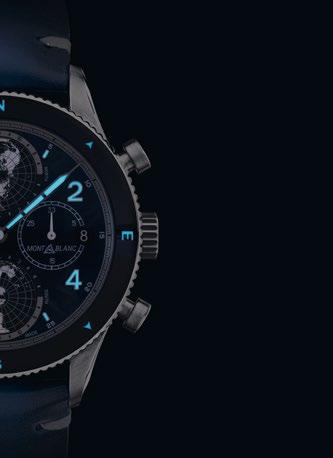
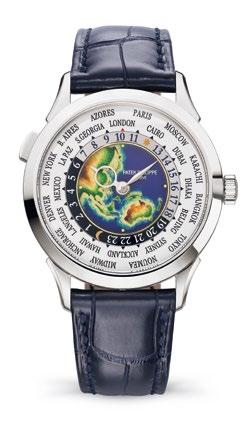 Patek Philippe
Patek Philippe


How did your passion for jewellery begin?
I was just born with it. And it’s something I’ve always striven to develop and follow, even though I came from a family of builders who for sure didn’t encourage me in this direction, and I was unable to take part in any specific courses. In a way, choosing the faculty of geology was also a strategic move, because on the one hand it reassured my parents about me joining the family business one day, while on the other it was connected to my true passion. My studies actually allowed me to appreciate the beauty and quality of all stones, not only those traditionally used in jewellery, which proved useful for the journey ahead.
At a young age you received some of the finest training...
Yes, we’re talking about legends such as Cartier and Bulgari. After finishing university, I got the chance to work for Cartier as an intern in the designers office... I proved myself and ended up staying there a year and a half. Afterwards, I also fulfilled my dream of working at Bulgari, a small family-run Italian maison, with extraordinarily innovative products that made it a real jewellery workshop. It’s true, I had great teachers who in their own way made me grow by letting me cover many roles and always opening me up to new experiences, also because I was always inquisitive, I wanted to explore everything.
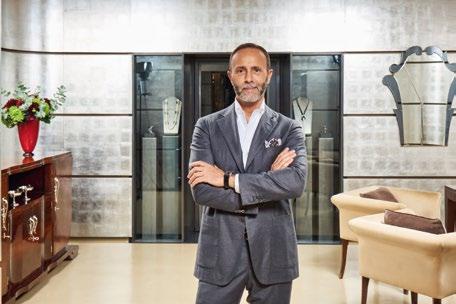
Where does your signature choice to use innovative materials for your high jewellery creations come from?
I’ve always tried to be different and to create my own style, even if it wasn’t easy shaking off two giants like Cartier and Bulgari, breaking with their style codes that had been my imprinting. I launched my business in the early 2000s, when everything revolved around the concepts of brand, distribution, globalisation: I moved in a completely different direction, I always aimed to differentiate myself, to evolve, to free myself from a purely business mindset. Jewellery for me is an emblem of freedom of expression: of course, we express our taste also through clothes, bags, shoes, but often when choosing these items, we are influenced by need or practicality. When choosing an item of jewellery, however, you are totally free and for this reason I’ve always thought that jewellery, in order to truly represent a person - and not make them the same as everyone else - should be original
Innovative materials and a very personal style: Fabio Salini’s high jewellery speaks a contemporary language.
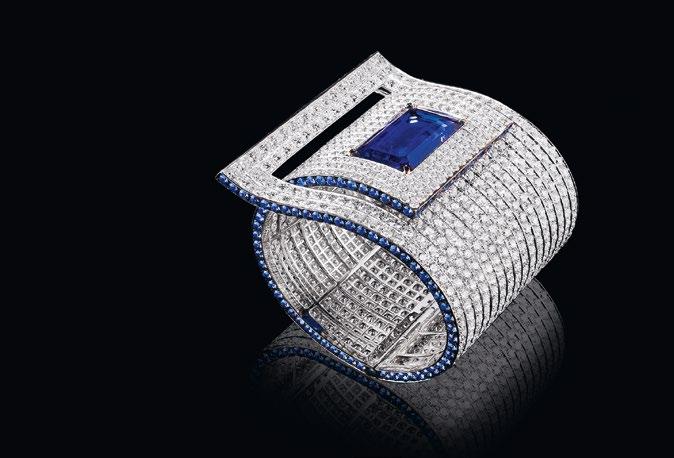




and unique. Introducing innovative materials therefore stems somewhat from the desire to be different and from an interest in creative areas such as fashion, art, and design. Plus, materials such as leather, carbon and wood transfer to jewellery their distinctive, intrinsic strength, something very different from the language traditionally spoken in jewellery.
Do you “build” your jewellery around a material or stone? Or is it the other way around?
Sometimes I already have in mind a piece of jewellery that will be created around a stone, sometimes I feel that I have to wait for the right intuition. One of my most spectacular necklaces, for example, is made up of stones of many colours collected over time but that had remained on my table for more than two years, undecided what to do with them, because I couldn’t find a really satisfying solution. There was nothing “wrong” or disharmonious in the traditional arrangement of the gems to form the circle of a necklace: but I felt the
result, although impeccable in form, was a bit bland. Until one day I had an eureka moment: I divided the stones into two rows of colours, hot and cold, I brought them all to the front - without arranging them around the neck, which makes some of them invisible - and suspended them on a carbon setting. The strength and energy of this piece of jewellery therefore comes from the stones all on view, from the two rows of colours that perfectly match, from carbon, which bestows to the piece a sense of modernity, technology, and masculinity, because it’s a material that is used in boats, race cars, and in the aerospace industry. I want to say that some objects, although “beautiful” and perfect in shape, do not arouse emotions: instead, an object in which there is tension, an expressive force different each time deriving from contrasts, volumes, proportions, does arouse emotions.
In your creations it’s hard to draw precise boundaries between jewellery, design, and art.

Undoubtedly I consider my jewellery an expression of art and with my work I want to help make jewellery a major form of art. Contemporary art reflects today’s society and culture, and at the same time it’s a tool for interpreting our times: for this reason, jewellery must continually evolve, not limiting itself to bringing back codes, shapes and styles from the past that no longer fit in with what surrounds us and therefore say nothing, don’t arouse any emotion or reflection. Contemporary art has introduced the concept and my concepts of black, of mirrors, of carbon, of the twisting of metal, and of contrasts reflect my idea of a discreet, respectful luxury, because it’s aware of the complexity of what is happening around us: I have also created rings that form a carbon shell and reveal their own wealth only when you open them, a stone embedded in a cage-ring and not on show. That said, for me jewellery remains “tradition”, in its finest sense, goldsmith perfection, the splendour of the stones... I don’t intend to stop speaking this language, but I want to speak it in a modern and new, contemporary way. For example, in my collections carbon has become the supporting material of the jewellery pieces: I’ve taken away gold from its traditional construction aspect and made it a decorative element, because it runs alongside the carbon, exalts it with the richness of diamonds, accentuates curvatures, creates a contrast...but it’s no longer the main material.
What kind of woman do you have in mind when creating a piece of jewellery?
I always think of a powerful woman with a
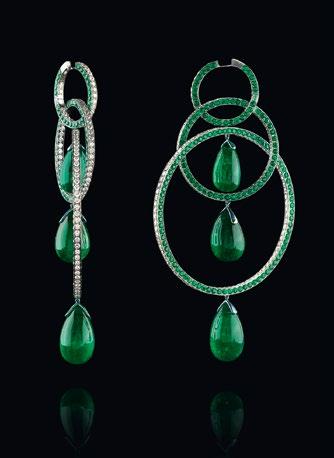
strong identity. My customers are actually all women with their own distinctive personality. When I introduced carbon fibre, combining it with pearls or “traditional” gems, I transferred the world of industry and technology into the female world: the opposite of the bows, butterflies and soft colours of most traditional jewellery designed for women. Any creation of mine - even the finest and most delicate - has its own personality, its own strong character.
Do you make a lot of custom jewellery?
Yes, I do. And it was often commissioned work that stimulated the creation of some of my most successful pieces of jewellery. When you’re totally free to express yourself, you inevitably end up following your instincts, to retrace the footsteps of your own past. Instead, dealing with a customer with exact needs or expectations in terms of materials, colours, perhaps even budget, forces me to question myself, to find new solutions. This is how some of my best intuitions came about, which I then perhaps developed over time in a more complete, more evolved way: but it was still that initial exchange that gave rise to the idea.

The Campana brothers have always been involved in working with the community and often in the productions of their design studio they include ethical themes, making statements linked to the history and situation of their country, Brazil. Also, just like me, they like using unusual materials. There was immediate harmony between us. They decided to explore the jewellery sector, we met in Rome and after ten minutes we were already coming up with and scribbling down ideas! The flash of inspiration came when seeing capim dourado, a protected Brazilian golden grass with which we created those extraordinary pieces. The concept of that
collection calls into question the very idea of luxury and leads us to ask ourselves “what is more luxurious: gold, diamonds, or our fragile planet and endangered species?” We were in perfect harmony and there’s perfect harmony in the jewellery of that collection that transmits a great strength to very luxurious and feminine objects. Despite using a totally different language to that usually spoken by the Campana brothers, we still maintained and communicated their spirit.
Is there a piece of jewellery that you’re particularly fond of?
Every single piece satisfies me and I’m also happy with those that have not completely satisfied me because they led me to improve the next pieces and keep on evolving. For example, I started working with titanium many years ago and for me now working with titanium would not be interesting if I hadn’t found an original and decidedly complex way to work with this difficult and not very malleable material: twisting it, creating tension in the metal, dominating it. So, I could say that the most satisfying piece of jewellery is the latest work, but, in reality, this statement is no longer true either: if I look at certain previous collections through today’s eyes, they seem outdated, but if I look at them through my eyes back then, they’re just as innovative as the tension with titanium today. Without doubt, technically I’m more advanced, but I’ve always maintained the same approach: the guiding principle of my career as an artist.

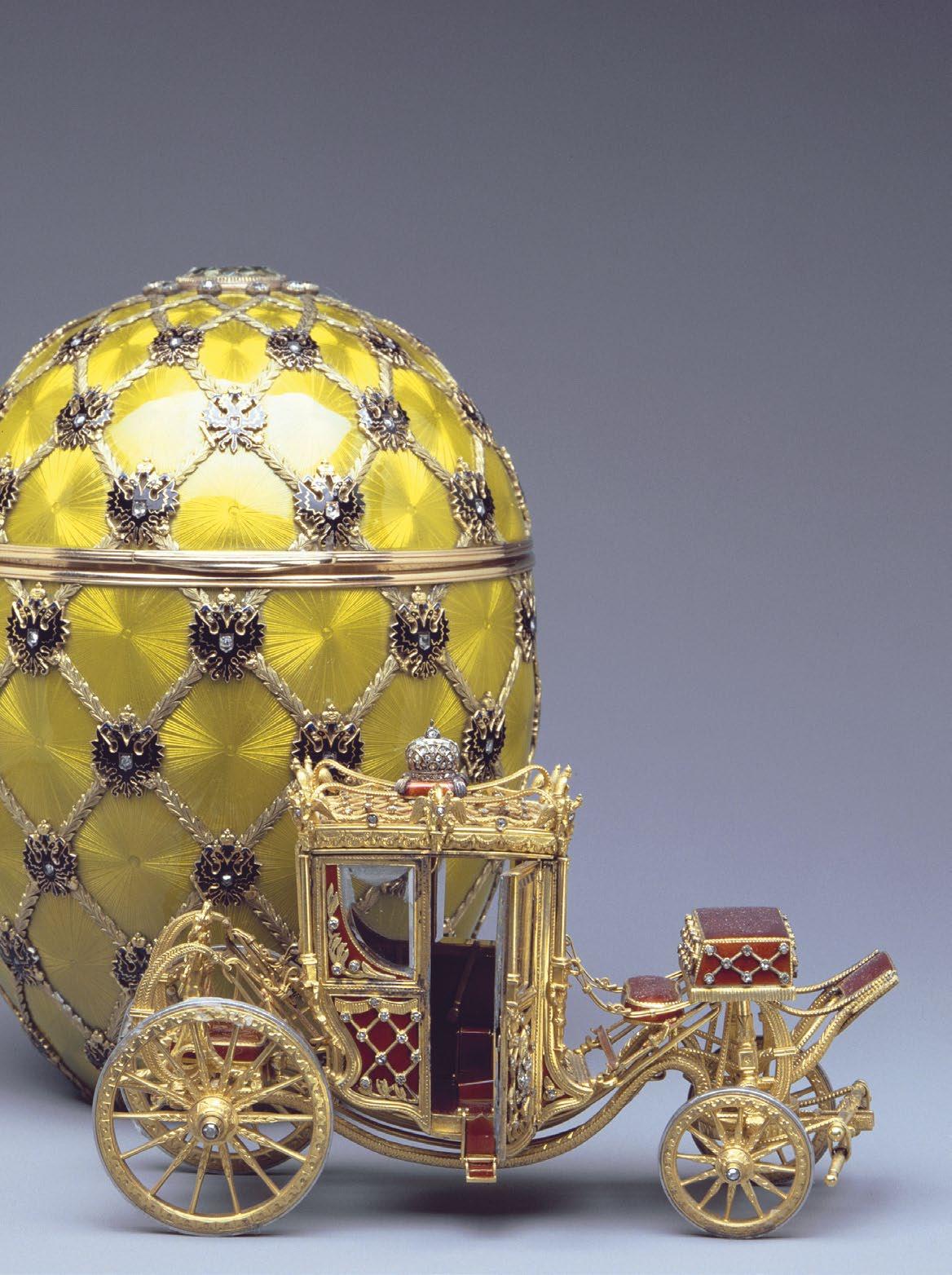 by Antonella Garello
by Antonella Garello
This is a quote by Peter Carl Fabergé, who considered himself an artist-jeweller, well aware of instilling in his works a creative value that went far beyond carats and Momme. Peter Carl Fabergé (1846-1920) descended from a Huguenot family originally from Picardy, forced to leave Catholic France in 1685 after the revocation of the Edict of Nantes which had until then guaranteed protection to French Protestants. Over the centuries and while heading East, his ancestors changed the original surname from Favri through Favry, Fabri, Fabrier to Faberge. It was Carl’s father, Gustav Faberge, arriving in St. Petersburg in the 1830s, who changed his surname to Fabergé and founded the goldsmith company of the same name that his son would lead to incomparable excellence. In 1864 Peter Carl completed a Grand Tour of Europe that would prove a turning point for him: he was welcomed and trained by great goldsmiths, he attended artistic and commercial courses, and visited museums across the continent. Returning to St. Petersburg, he was called to restore the masterpieces of the Jewellery Gallery of the Hermitage. This allowed him to truly hone his knowledge of enamelling and the goldsmithing techniques of the past, thanks to which in 1882, now owner of his father’s jewellery, he showcased jewellery of

«Expensive things interest me little if the value is merely in so many diamonds and pearls».


 Fabergé Treillage collection.
Fabergé Treillage collection.
exceptional workmanship at a pan-Russian exhibition in Moscow, which bewitched empress Maria Feodorovna, wife of Alexander III Romanov. From that moment fame and fortune were inseparable companions for Peter Carl Fabergé, who knew how to innovate the concept of colour in jewellery, exalting the shimmer of gems and using a fanciful and majestic enamel palette still unmatched today. In 1885 he was appointed official jeweller of the Imperial Court and in the same year the tsar commissioned him to make a special Easter egg for Maria Feodorovna to celebrate the twentieth anniversary of their engagement. It was the first of over 50 famous Easter eggs created by Peter Carl Fabergé, a masterpiece made with incredible skill that concealed its stunning surprise in a “matryoshka” structure: a white egg covered with matt enamel containing a golden yolk that in turn contained
a golden hen concealing a miniature copy of the imperial crown with an egg-shaped ruby! Fabergé’s eggs soon became famous throughout Europe for their sophisticated creation and original themes they drew inspiration from each time (and which remained hidden also from the tsar until being presented with the gift!). When the Russian empire was dissolved, they suffered various fates: some were bought by the new government, while others were resold inside and outside Russia, or even destroyed or lost: nine are currently kept at the Fabergé Museum in St. Petersburg. They have unquestionably become part of the collective imagination as an emblem of magnificence, so much so that they appear, a century after their creation, in successful films such as 007 Octopussy, The Code, Ocean’s Twelve and The Intouchables! The twentieth century opened with the triumph of the Fabergé jewellery house at the Universal Exhibition in Paris, awards and honours came from all over Europe, the House, at the height of fame, was then the largest Russian goldsmith factory and employed over 500 craftsmen and designers, branches opened in Moscow, London and Kiev, throughout Europe but also in America and the Far East noble and royal, magnates and collectors competed to buy jewellery and creations: all the pieces, jewellery, objects, beautiful animal figurines were highly sought after. The Russian Revolution decreed in one fell swoop the end of the Romanovs and the end of the Maison, the factory was nationalised and entrusted to the Committee of Employees of the Company K. Fabergé, the stock in the warehouse was confiscated. Peter Carl secretly fled and eventually took refuge with his family

in Switzerland where he died a few years later, a man that biographies describe as fragile and broken. The heirs founded Fabergé & Cie in Paris, but times and styles had changed and in 1951 the family lost the rights to the name and transferred them to an American entrepreneur. After several changes of ownership, in 1990 the historic German company Victor Mayer held a licence with the task of resuming production - the founder’s heirs are still Fabergé workmasters. The happy ending came in 2007, when the Pallinghurst Resources fund acquired the Fabergé brand from the multinational Unilever with all the associated rights and licenses and created the Fabergé ltd for the production of jewellery: the Fabergé name was finally reunited with the Fabergé family (Sarah Fabergé, great-granddaughter of Peter Carl, is now in charge of special projects). Since then, the house of Fabergé, taken over in 2013 by Gemfields Group, supplier of responsibly sourced coloured gemstones, has returned to compete on international markets, drawing inspiration from its extraordinary history but turning it into an artistic language fitting for today. Its pieces, the result of exceptional craftsmanship and technique, revive the sense of colour, creativity, festivity and the ability to surprise of the origins, combined with
contemporary themes and techniques. In the last decade - almost to close a circle broken with the October Revolution - the maison - also a proud member of the Responsible Jewellery Council - has won major awards in the watch sector, has started important collaborations (such as the unforgettable ones in 2018 with Rolls-Royce for the creation of an extraordinary Imperial-style egg and the one in 2021 which resulted in a masterpiece like the Fabergé x Game of Thrones Egg), has played a leading role in celebratory exhibitions, and returned to grace fairs and glamorous events. Fabergé creations are available by appointment in the London boutique, where customers also have the opportunity to assist in creating bespoke pieces,“working” side by side with the designers of the maison, from Harrods to London, to the Dubai Mall, in the Houston boutique and at prestigious international stores. As well as online, at faberge.com: intangible bridge between past glories and future success.
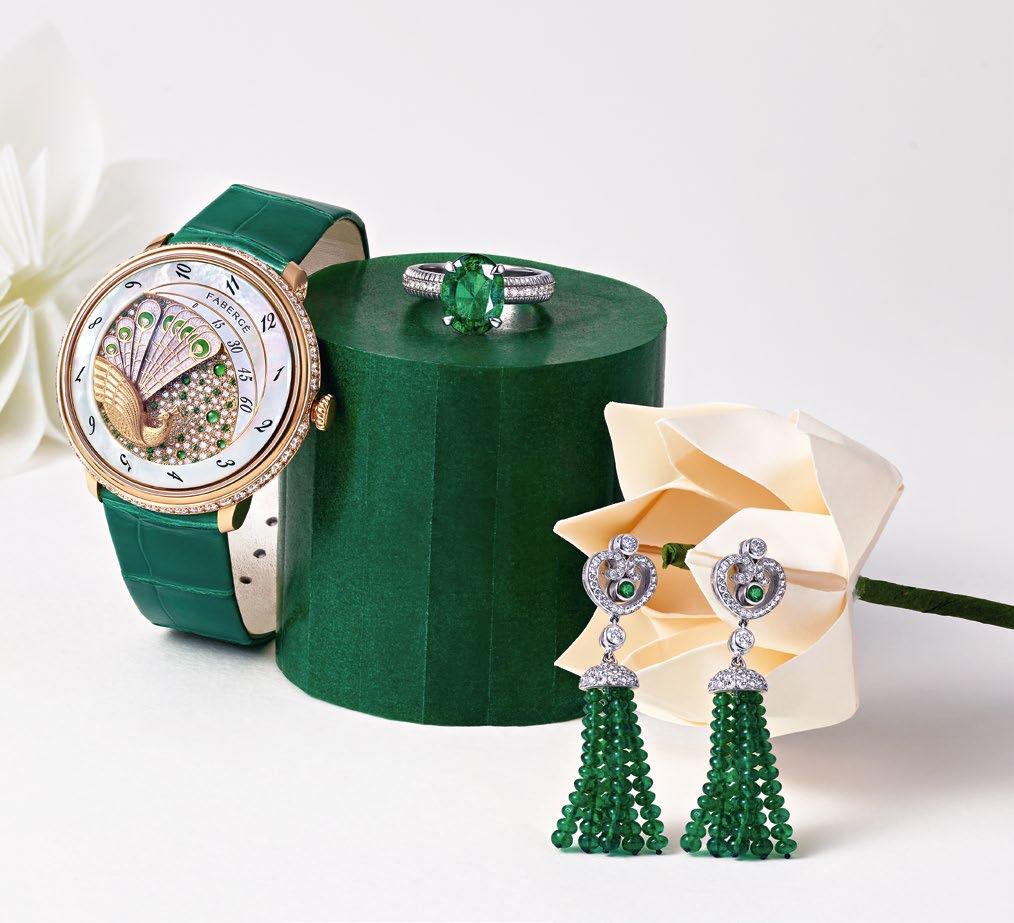
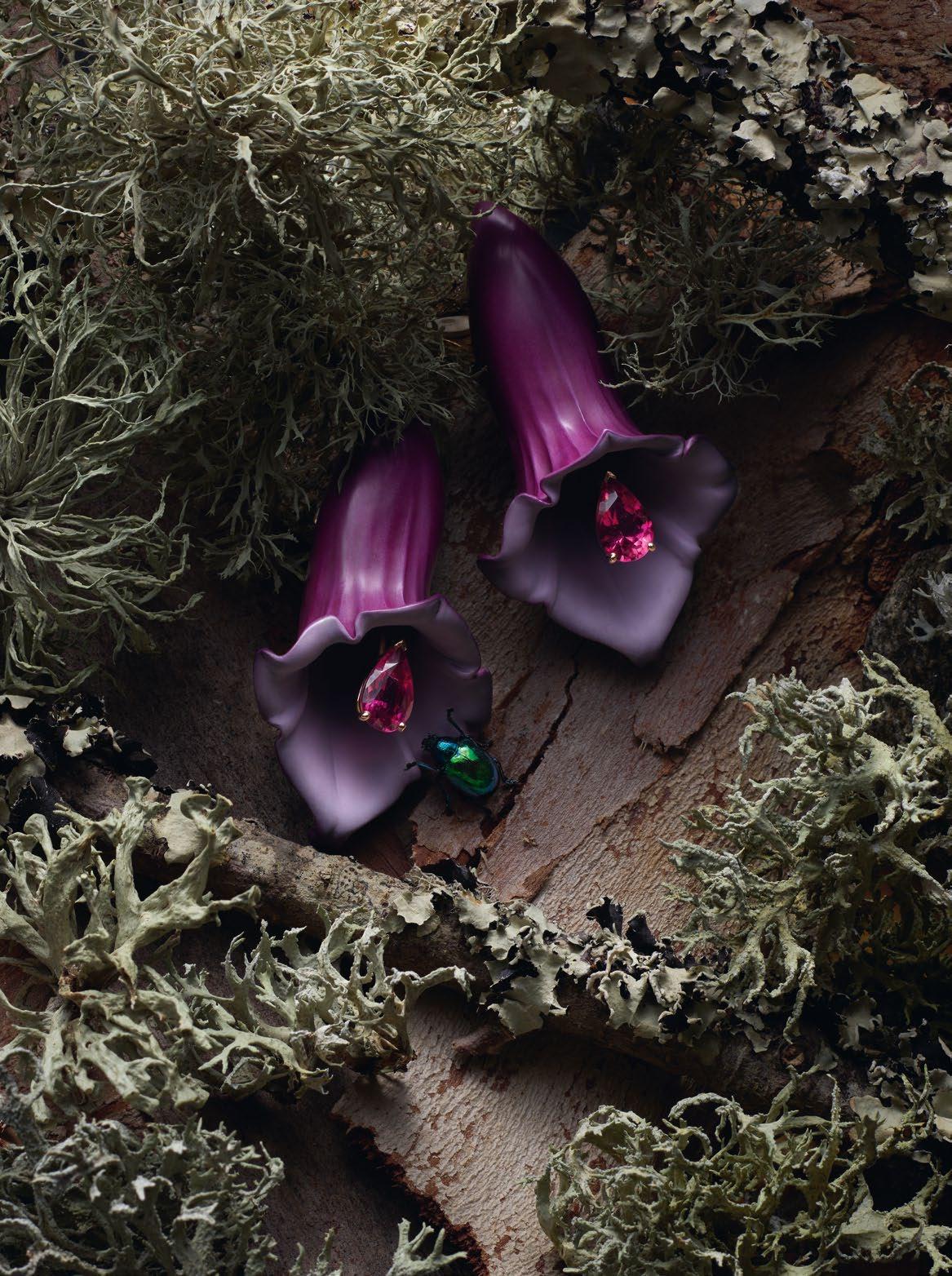
For this interview, he was in the Maldives Islands, diving but above all contributing to replanting coral in the ocean as part of his strong commitment to the environment and to the many organisations he collaborates with. Born in Annecy, in the French Alps, Emmanuel is very attached to his region of origin, between its splendid lake and the surrounding mountains. Since his childhood, he has been traveling a lot with his family, discovering exotic places and living extraordinary adventures. All these memories and experiences have immensely contributed to his inspirational background and have given him this subtle sensitivity to observe the beauty of nature and everything that surrounds him so to transform it into marvellous high jewelry collections.
Already at an early age, Emmanuel was passionate about art and gemstones, he practiced sculpture for 13 years and music (oboe) for 12 years. He started getting acquainted with jewelry thanks to his Bachelor studies at the High School of Art and Design in Geneva where he enrolled in the jewelry department.
During these three years in Geneva, Emmanuel acquired the technical basics of his art. An internship in Paris in a studio working for Van Cleef & Arpels followed by 3-year collaboration with this same Maison allowed him to become familiar with the work on exceptional pieces while fine-tuning his mastering of high- jewelry techniques.

In 2017, Emmanuel took a leap forward by starting his eponymous company and

Every time I get the opportunity to talk to Emmanuel Tarpin, one of the most sought-after names today in the panorama of rising jewelry designers, he is always in wonderful locations!Photo by Zoe Fidji
creating the first pieces of his own, using innovative techniques, like aluminum or bronze treatments, which he willingly combines with precious stones, playing on the balance between the volumes and the lightness of his pieces. Very quickly, he raised curiosity and interest from connoisseurs. The auction house Christie’s included his very first creation in their famous Magnificent Jewels sale of December 2017 in New York. Shortly after, he participated to the first edition of GemGenève in 2018, and won two awards as the Designer of the year by American magazines and The Fashion Group International. Ever since his creations are all unique and never replicated. Each piece of jewelry takes several months to complete. He is now mainly known by word of mouth and his clients are approaching him for the love of exclusivity, bespoken service as well as rare and avant-garde usage of materials. In our conversation, Emmanuel mentions that he really enjoys the freedom of creation and this is why he likes to have a good balance and rhythm between his inspirational process, the relationship with the customer and his new jewels. In every piece, he likes to have a game of texture and color. «For example, something shiny next to something matte - to play with each other».
Once a client was very intrigued by a brooch inspired by a specific season and when he commissioned the piece, Emmanuel designed the brooch hence inspired by a different season not to duplicate. He soon developed the remaining two seasons so he created a series but none of the brooches are the same.
Today Emmanuel travels the world on one hand to inspire himself but also to meet up with his private clientele. He is based in Paris but travels to New York at least six times a year as he wishes to be close to his customers in the creation process. As the inspiration from nature is always so strong, Emmanuel always has a notebook with him, where he quickly fixes the idea and keeps the momentum and then when the right moment comes, he starts by thinking about the stones, materials and then makes it concrete with the small ateliers he collaborates with. He enjoys having a privileged relationship with his clients, discuss with them, get to know them better in order to seize the taste, evolve the idea but also handle the creation process in a simple and spontaneous way. He says that he wants «to integrate in his creations the strength of heritage but at the same time a souvenir or an image coming from a journey, a moment, the spontaneous beauty of nature».
His clientele is not only women, many men are approaching him to have a piece designed. Sometimes his creative exercise becomes a bit more influenced by geometry and this is where he finds the beautiful balance that only nature can bring between forms and poetry but above all, Emmanuel enjoys the freedom of creativity, magically inspired by the flow of observation, connexion and relationship to an objet or a person. Even though most of his pieces are devoted to flowers and vegetation, there are also a few creatures coming along in Emmanuel’s collections. He says he got very inspired by the intense labor of ants and he started designing them, one different from the other, enhancing the humor of these one of a kind creatures into jewelry. So, what is next for him? For sure the new collections that will generate from his next trip: Tahiti. He will spend a month on the island, completely devoted once again to the environmental cause but once again nature will be for him a strong source of inspiration. This Tahiti trip will for sure add a new flair towards nature inspired collections but this time it will certainly put the accent on the deep universe of oceans, its plants, fishes and amazing colors that you can only seize by diving.

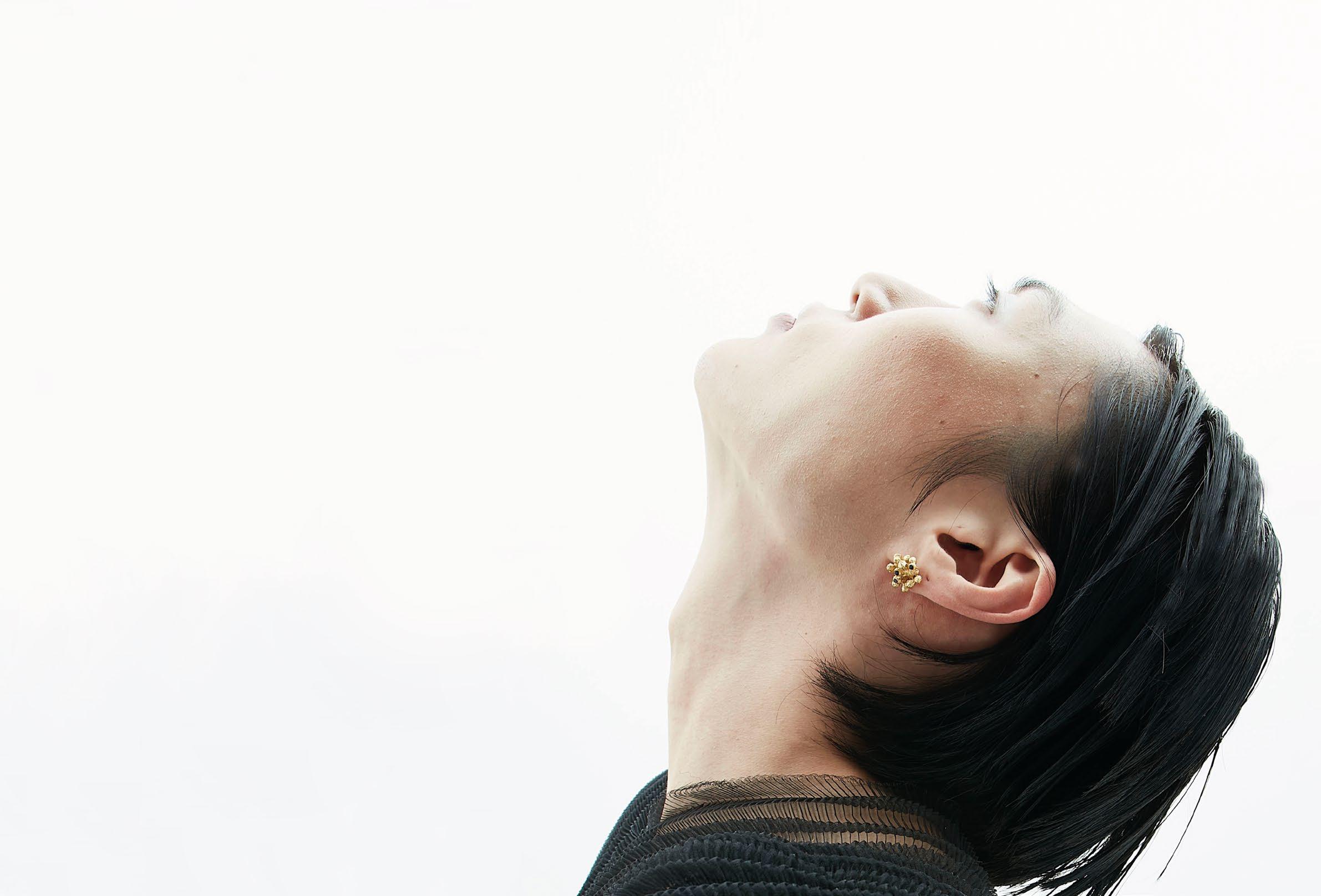

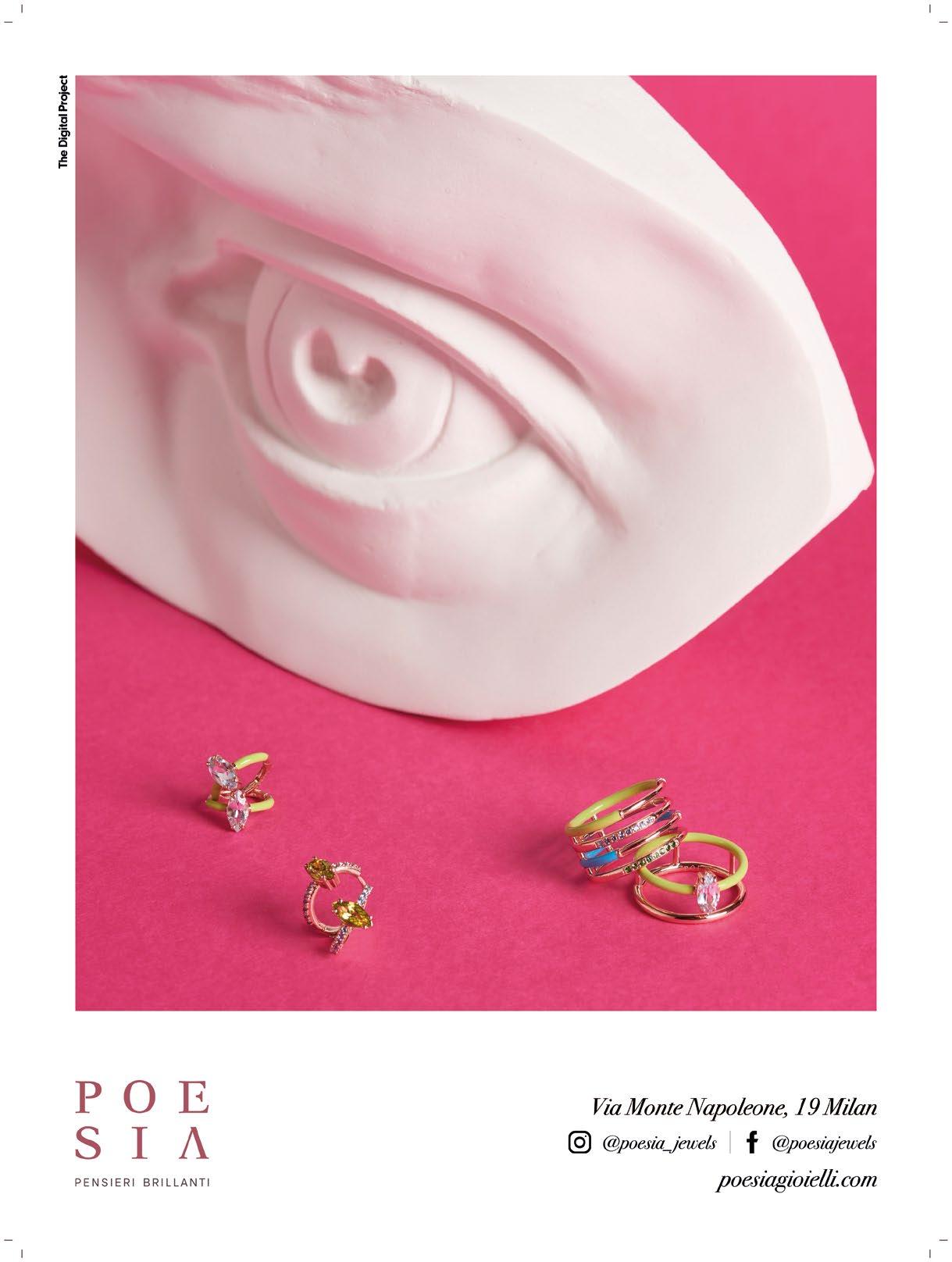


To confuse. To overlap. To trick. To


have fun. Fluid fashion does not have to be a gender problem but a role play. Or rather, a question of style. Of creativity.Mikimoto & Comme Des Garçons
Trying to define the concept is now a useless exercise. Fluid is an overused word, so often pronounced, written and posted that its meaning has become diluted. It is impalpable, almost incomprehensible.

It cannot be displayed. In this moment of confusion, it is worth stopping and turning our insistent gazes towards the past, capable of telling without prejudice that genderless fashion is not the fashion of the future but the fashion that will never go out of style. Androgynous is the answer and has always been there, for all to see since the beginning of time. From the myth of the Amazons to the hermaphrodites.
If you peek through the pages of the last century there is Louise Brooks who used her haircut, baggy pants and abundant masculine shirts to catapult women, tightly wrapped in turn-of-the-century corsets, into the alpha universe, tearing open the veil of prejudice. And so did Coco Chanel when she wore her lover’s pants to go to the beach. How different is she from Matteau’s sulky model tucked into a floral shirt, black pleated linen trousers, with a gaucho-style leather belt squeezing her waist?
To resemble each other until overlapping like David Bowie did. An indisputably elegant genius of transformism. He has disrupted the aesthetic canons related to sexuality with experimental looks defined by evident gender fluidity. An example of this is the cover of his album The Man Who Sold the World, which depicts him wearing a floral shirt dress and his long blown out mane. Fifty years later, history repeated itself with Harry Styles, the first man to be photographed alone on the
cover of Vogue America with a maxi flounced skirt by Gucci.
And then Prince. Anthony Vaccarello’s Victorian shirts for Saint Laurent look like they’ve been stolen from the Purple Rain rock star’s dressing rooms. Ruffles, lace, multilayer jabot and wide sleeves, with showy Swarovski cabochon crystals on top. They are reminiscent of the signature Gucci shirt worn (once again) by Harry Styles, which swelled as he played the piano underwater in his Falling music video. But also his black suit with bermuda shorts and oversized sunglasses, a tribute to Yves Saint Laurent’s muse Betty Catroux, with a masculine twist.
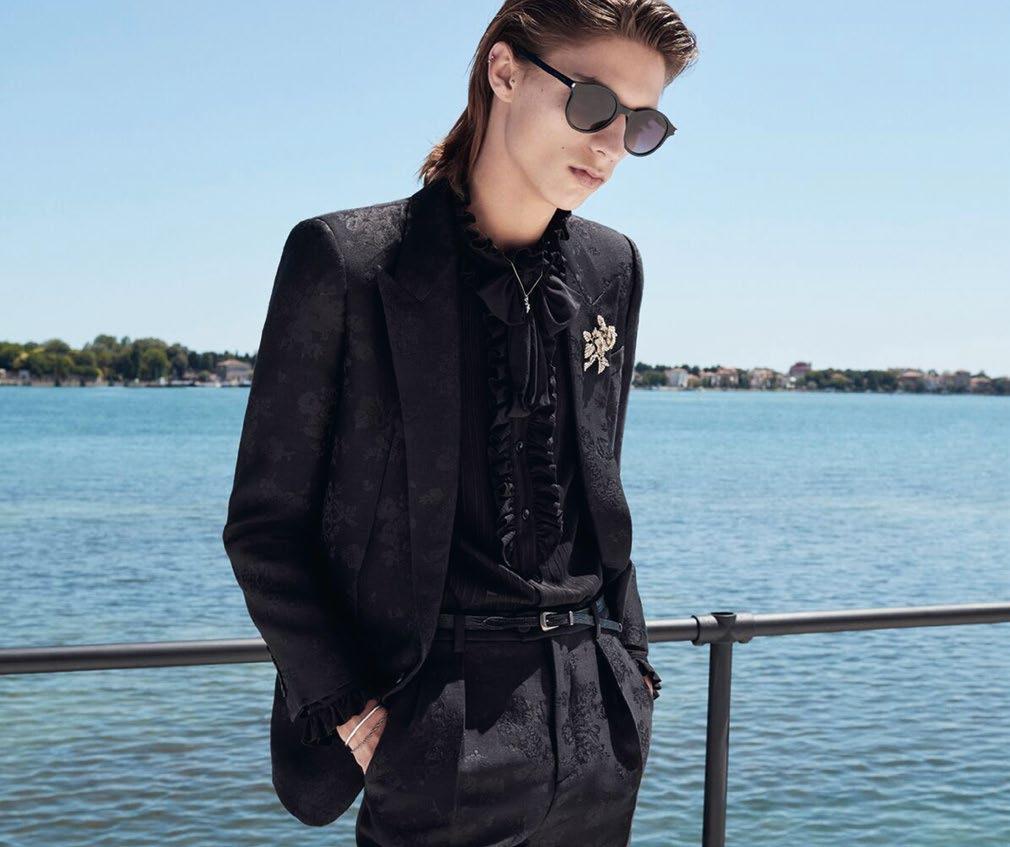
Overcoming clichés is well rooted in the pop artist’s DNA. But doing it without pretence is a talent few people have. History teaches it and the present confirms it. Styles pushes hard on self-affirmation and freedom of expression, and practices it with disarming, hypnotic naturalness. A keen eye will catch the references, from Bowie to Jagger to Elvis
Presley, but he plays along and is pleasantly guided by his ability to always be at ease in his shoes.
Mikado expresses the same ease in the pearl collections dedicated entirely to him. Cascading chokers and bracelets that move fluidly from classic to punk rock. Coco Chanel would have loved them very much. And so does Fendi with a collection of men’s bags that can fit on a woman’s arm without distinction. The power of the androgynous style lies in its charm and mystery, in its provocative, desirable, attractive side that still leaves room for experimentation. It is no longer about redefining masculinity and femininity but simply sharing their codes in our constant search for beauty. This alone can make us unique.
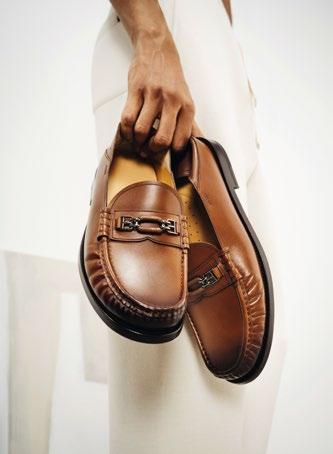


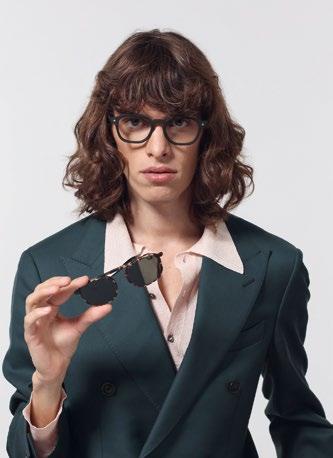 BALLY
BALLY YSL
Matteau
BALLY
BALLY YSL
Matteau
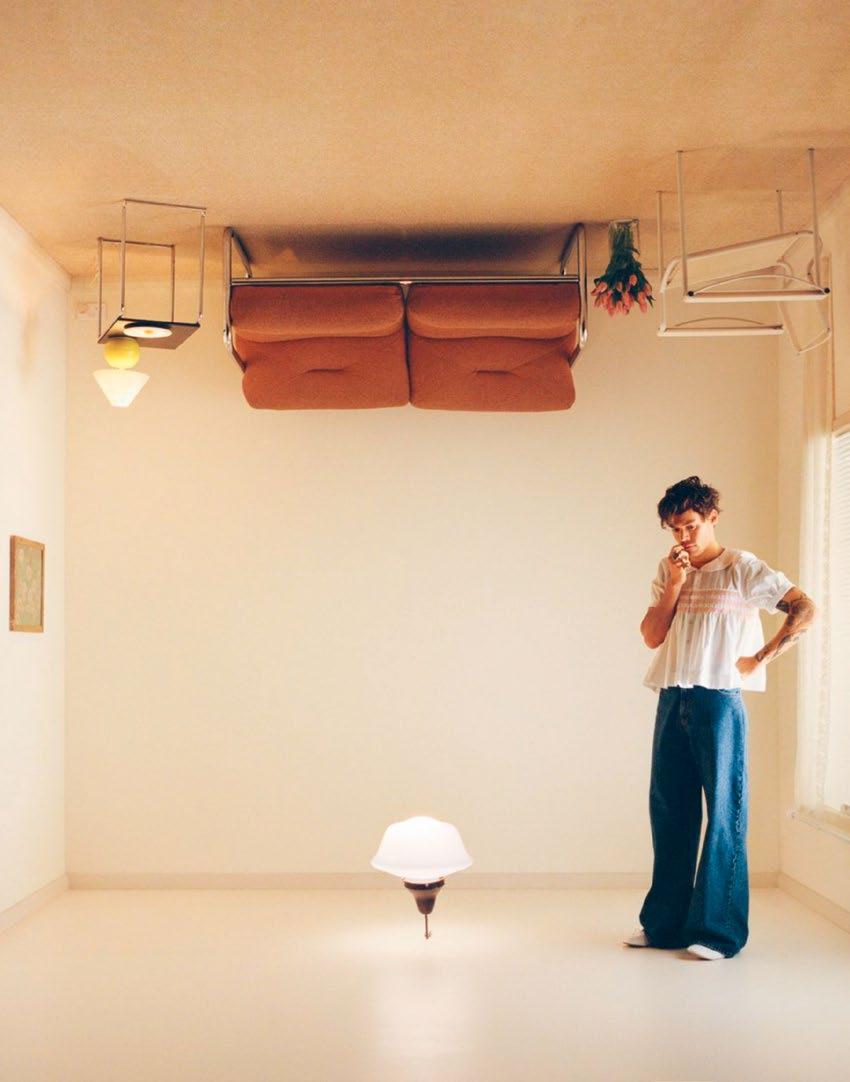

Sharp eyes and a gentleman’s approach. True to beauty. Know-how and kindness. Meet Cristiano Marchese, director of Urbn Models Milano. He lends Huesers his perspective, speaks of his twenty-year career and how aesthetic canons have changed from the 1990s to this day.

Why did you decide to do this job?
by Samantha PrimatiIt all started by chance. At the time, I was an artistic director for some clubs in Piedmont. A well-known Fashion Model booker contacted me for collaboration as he looked for dancers for a party he had to plan in Milan. He asked me to arrange a casting to choose them. He liked my selection so much that he suggested me to be an assistant at his Fashion Men booking table once I was done with the job.
What is beauty to you? Could you define it? Elegance, simplicity and uniqueness.
How has modelling changed in the last decade?
Oh, it has changed a lot. In the past, a model’s career was built step by step, season after season. Now it’s hit and run. Casting directors are always on the lookout for new faces that they tend to feature for a single season only to forget them the next.
Where will this take us?
Greater experimentation, keeping creativity alive of course, but unfortunately this will affect model’s career.
Which decade would you choose from the last 70 years of fashion and aesthetic standards?
The 1950s. Those of Dior’s New Look, Chanel, Elsa Schiaparelli and Sorelle Fontana.
What are the pros and cons of today’s stereotypes?
On the one hand, there is a continuous search
for diversity, defined as normality. There’s a tension that tends to have a negative impact on aesthetics and beauty.
Should the concept of body be detached from proportion canons and perhaps from the body itself?
Yes, and it is a good thing, but I think that we should always evolve in the realm of beauty. Flaws are now taken to the extreme, bordering on the grotesque. But imperfection, which makes us unique, should be valued in terms of aesthetic harmony.
Now there are even digital agencies for avatars and artificial intelligence. What do you think about it?
I hope and trust that fashion remains linked to the real world and not to the virtual one.
What is your opinion of influencers?
Influencers have contributed significantly to progress by allowing even ordinary people to identify with other popular but less “perfect” people. But for me, fashion is about dreams and desires, so models should provide their own vision of it.
Is modelling still a great aspiration?
Absolutely yes.
What are the challenges in your work today?
The challenge is to be professional and unique. At all times.

 by Antonella Garello
by Antonella Garello
After Wild in 2016, Vanitas Mundi in 2017, Nautilus in 2019 and Jewels from a Wunderkammer in 2020, Giovanni Raspini is back this year to surprise with his personal Around the World in Eighty Jewels, an exhibition of contemporary creations that opened on 5 May in Milan at the historic Palazzo Visconti and then moved to the Coffe House of Palazzo Colonna in Rome. Architect, silversmith, goldsmith, refined craftsman, cultured and multifaceted personality, Giovanni Raspini - with his team of modellers coordinated by Erika Corsi - has created in six months for this collection eighty unique pieces, in silver enriched by an incredible variety of semi-precious stones and other materials, using different processing techniques. The jewellery is inspired by the most diverse places and creatures on our planet: in this round-the-world tour, we move with ease from the architecture of Manhattan to the bears and salmons of Canada, from the Brazilian forest inhabited by colourful toucans to the funny penguins of Antarctica, from tender koalas to the gods of Ancient Egypt... An all-round World Tour, to be seen as a tribute to the specificities and beauties of our planet, all worthy of being represented, admired and preserved, but above all as a hymn to travel itself - an eternal metaphor also for journeys and inner explorations - which by its very nature knows no frontiers or boundaries and on the contrary opens up new horizons to the traveller. The exhibition catalogue, like the previous ones published by Edifir in Florence, is complete with colour illustrations and preparatory drawings, and the iconographic material is accompanied by a preface by the historian Franco Cardini, two texts by Giovanni Raspini himself - one dedicated in particular to the large bronze hot-air balloon, the exhibition’s iconic sculptureand an essay by Francesco Maria Rossi on travel as an important source of creative inspiration. The jewellery is accompanied by brief descriptive texts.

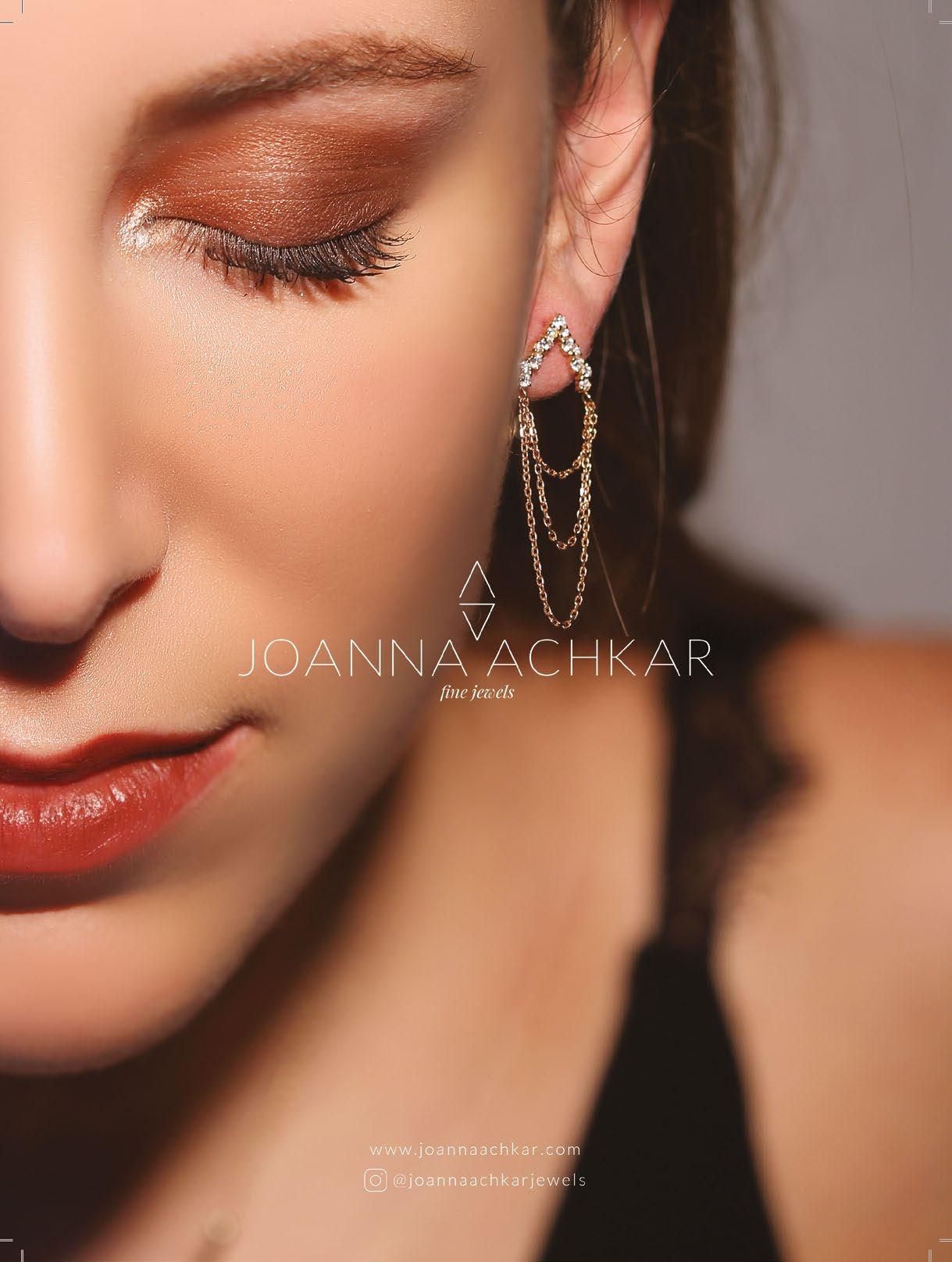
 By Domenico Festa / Photo: Didier Frevert
By Domenico Festa / Photo: Didier Frevert


 Opening page: yellow gold earring with yellow diamonds and natural pearls by Alessio Boschi. On this page: Rubeus Vert perfume from the Tutti Frutti collection. Page alongside: yellow gold bracelet with white diamonds and citrines by Carlo Barberis.
Opening page: yellow gold earring with yellow diamonds and natural pearls by Alessio Boschi. On this page: Rubeus Vert perfume from the Tutti Frutti collection. Page alongside: yellow gold bracelet with white diamonds and citrines by Carlo Barberis.

 On these pages: yellow gold bracelet and ring, with natural white diamonds set on white gold from the Riflessi collection by Oro Trend.
On these pages: yellow gold bracelet and ring, with natural white diamonds set on white gold from the Riflessi collection by Oro Trend.

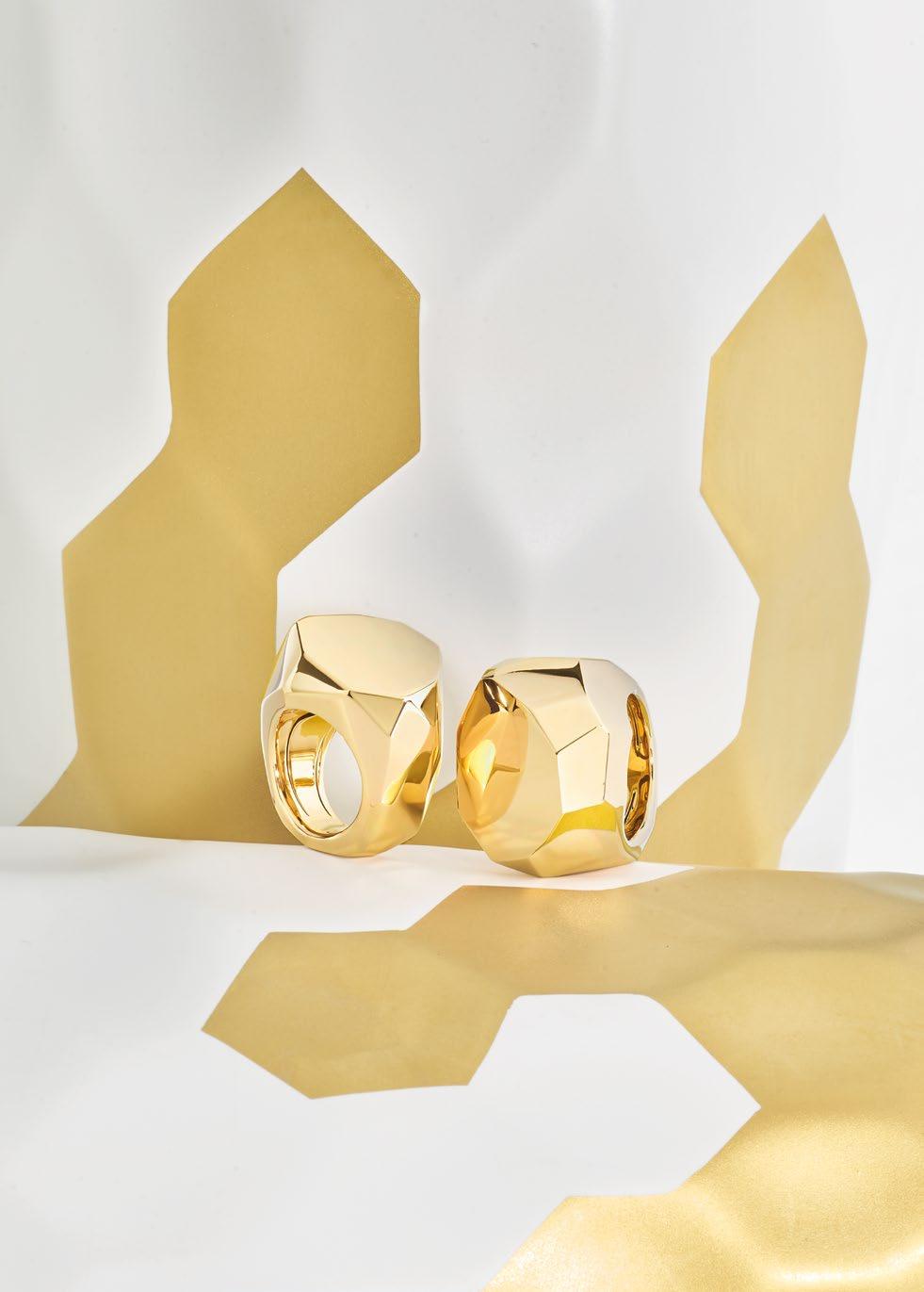
On this page: M.Micallef Parfum - Secrets of Love Passion.
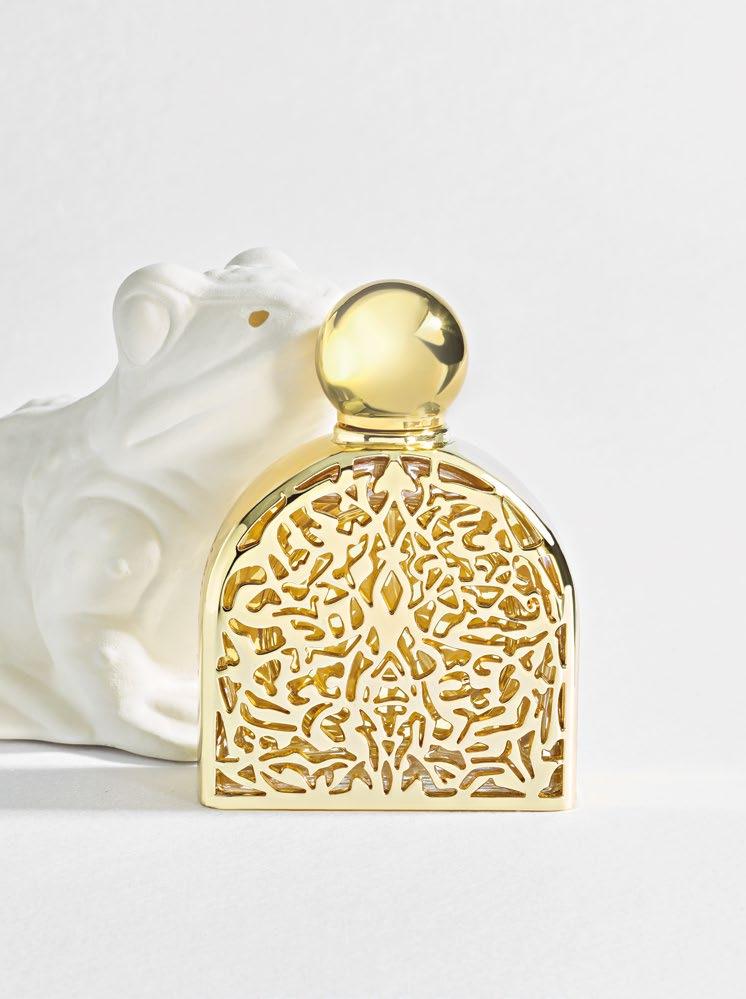 Page alongside: 18 carat yellow gold rings from the Linea d’Ombra collection by Tornaghi.
Page alongside: 18 carat yellow gold rings from the Linea d’Ombra collection by Tornaghi.
On these pages,
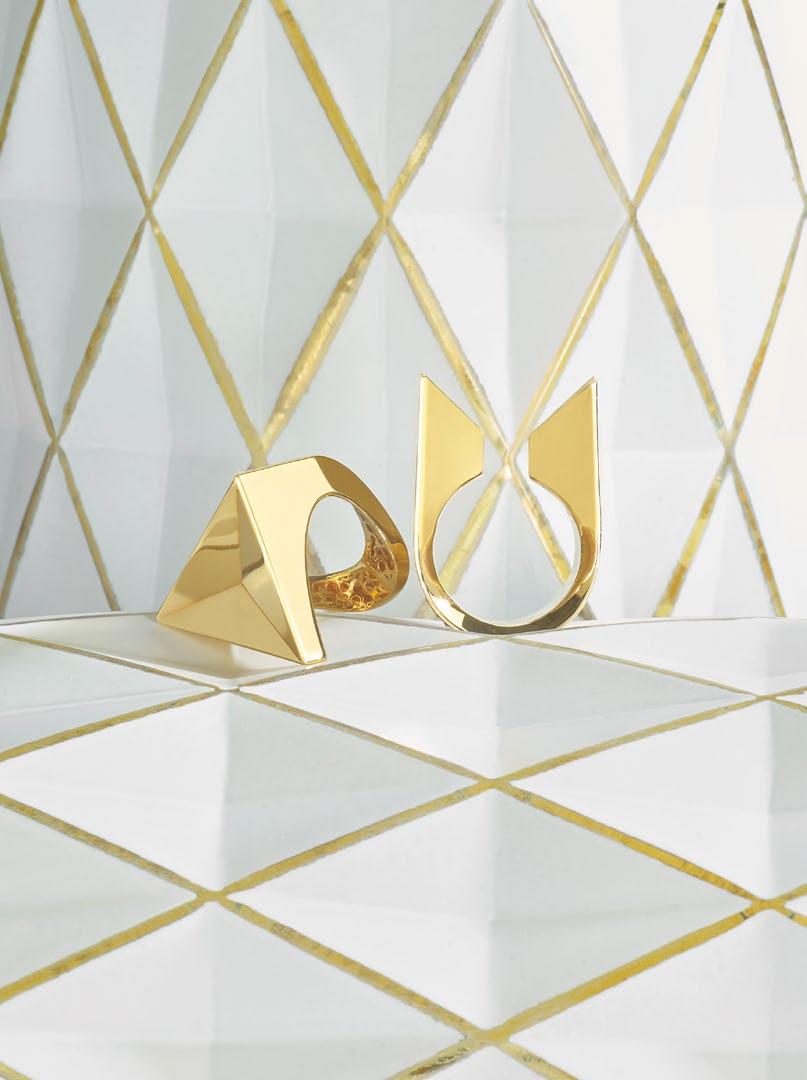 all by Femar: 18 carat yellow gold rings, from the Sharp collection.
all by Femar: 18 carat yellow gold rings, from the Sharp collection.



When describing John Moore’s work, it is not enough to refer to the concept of jewellery in the strict sense, of an accessory as an end in itself: his art transcends the boundaries of decoration and elevates to an expression of inner energy. His jewellery is the result of twenty years of introspection, study and meditation that have transformed the creative process from a simple declaration of beauty to a genuine interpretation of positive energy. «When I was just starting out, I would describe my work based purely on its physical characteristics: inspired by natural architecture, the use of repetition, movement and colour - John remarks - However, in more recent years, together with my spiritual growth through meditation, I have begun to understand my work with a depth difficult to express in words. My creations are physical representations of the sheer positive energy that I feel in my core, the source of everything, consciousness, the universe itself». This energy was initially expressed through aluminium and silver which then gave way to more visionary experiments able to shape ideas using wood, polymer paste, silicone, fabrics, paper, but also photographs and videos, two means that made it possible to communicate one of the most important sources of inspiration of the artist, that of movement. «I worked on three videos with wearable

«My creations are physical representations of the sheer positive energy that I feel in my core, the source of everything, consciousness, the universe itself».
 john_moore
Chris Bulezuik
john_moore
Chris Bulezuik
sculptures on dancers - continues John - I like variety and I love experimenting. At the moment, for example, I am experimenting with papier-mâché and resin, and I have started two unusual collaborations, one with a ceramist and the other with a group of physicists». Nature remains the main source of inspiration for the artist who still retains a strong working and personal bond with it. In actual fact, John, in addition to being almost fully vegan and ambassador of the Forests Without Frontiers initiative that in just two years has been able to plant over 100,000 new trees in the Carpathians of Romania, has implemented sustainable practices in his day-to-day work. After studying the serious consequences of irresponsible mining in more depth, John chose to use certain types of metals, such as aluminium, found in large quantities on our planet. «I worked with a small amount of gold purchased from certified suppliers and then chose not to work with precious metals at all, except for one or two potential projects in which I will use recycled gold for awarenessraising purposes. The aim is to encourage consumers to always ask themselves where their gold comes from».
In recent years, the production of commercial jewellery has made room for the work of an artist and coloured anodised aluminium once
again takes centre stage in his creations. In particular, in preparation for taking part in the exhibition “What Colour is Metal?”, John created one of his most ambitious works, Pagoda I, a voluminous yellow and black necklace with an immense visual impact. «I started to focus exclusively on my work as an artist at the end of 2019. Then the pandemic forced me to question everything, but after the initial panic subsided, an extremely creative and clarifying experience began. Creating Pagoda I absorbed me for six months because each component is cut and finished by hand. It was an opportunity to show myself what I was capable of, given the freedom I had, and now there is no going back». “What Colour is Metal?” is currently on display at the National Design and Craft Gallery in Kilkenny, Ireland, and will move to the UK in October at the Winchester Gallery at the Winchester School of Art. Thanks to the collaboration with the Elisabetta Cipriani Gallery in London, John Moore also takes part in art fairs such as PAD London, MiArt Milan, Art Basel, Design Miami and other independent exhibitions.

 by Antonella Garello
by Antonella Garello
Since its foundation in 2017, Donna Jewel has gained over 150 thousand followers all over the world on social channels, fascinated by that particular style which is artisticcultural and at the same time has a modern ToV, capable of bringing young people closer to jewellery. Founder and creative soul of the project, Laura Inghirami grew up in Tuscany between her maternal grandparents’ jewellery workshop and her paternal family’s textile company: «In general, I have soaked in entrepreneurship, beauty and art since I was a child, inheriting my family’s passion» she says.

Then I decided to create my project completely on my own, which is also the result of my entire experience». Donna Jewel’s posts are about the excellence that Laura discovers in Italy and around the world: artisans, emerging talents, Maisons, the antique markets she has been passionate about since she was a child, and cultural and artistic events. Forbes Italia recently selected her among Italy’s 100 under 30 talented creatives in the Art & Style category.
The Forbes recognition rewards several focus areas of your work and career. How did you experience this event?
When I received this recognition, my mind went back to when I first started my journey. I can’t deny that nothing came easy; at first, it was hard to make others understand my work. Still, I felt that I should not give up. A little by character, I have continually transformed defeats into challenges, and at the same time, I have always followed my heart. I never thought about success; I never started thinking about how I could influence people through my
thinking or choices or how I could become a teacher. I didn’t even think I would ever become an inspiration in the industry. I just followed my instinct, which told me to invest in my passion by studying and staying curious every day to give voice to the beautiful stories that exist in the world of jewellery.
Your career indeed corresponds to personal growth: how much has Donna Jewel enriched and changed you?
A lot. I have been fortunate enough to work in a cultural sector where sensitivities are similar, and for this reason, they meet immediately. It is rare that, at the end of a business meeting, I’m not impressed in some way by the person in front of me; there is always something that strikes me and enriches me. I’ve always been curious by nature: as a teenager, with the insecurities of that age, I was a different person than I am today. My passion and dream took away all the fears I had because I could be and express myself through that dream and passion.
How has your work changed over the years? What do you focus on most now, and what are you most in demand for?
At first my work was very different. It all started with a passion: sharing my favourite artists on Instagram by giving them a voice. I was a millennial girl like many others. Still, unlike my peers on social media, I would not share my personal life but my passion. Since I had no friends who shared the same love of jewellery, Instagram was a window to the world through which I could express myself and chat with young people from all over the globe and talk about the artists I met or liked. Today I am no longer alone. I have a team, and Instagram is just one of the links that connect our business. We offer consultancy services to jewellery companies in the digital marketing and creative fields and where I

find myself teaching and writing for industry magazines. Using my skills and vision to help other companies in the industry gives me great satisfaction. I like everything I do to the point that I feel really tireless and always open to new cultural projects in this field. However, the greatest satisfaction is to see the success of the businesses we collaborate with and the growth of my students and my team. Today, one of my main goals is to make the company grow more and more by expanding my team to spread increasing value in our sector.
What is your idea of “excellence”, which seems to be the common thread in all your work?
For me, excellence is an exercise we should practice every day, so much that it becomes an integral part of our being, the way we see things, think, and act. It is a bit like staying young forever: a daily exercise that requires a lot of time, curiosity, research and commitment.
Have you ever met someone who really impressed you?
Every time I meet an artist, I am always amazed, like someone who would have wanted that dialogue to continue. This happened to me with all the players in our industry; it’s hard to pick one in particular. And I’m always impressed when I meet my students: their pressing questions, curiosity, and flame have made me realise that I want to stay young forever!
Influencer? Digital entrepreneur? Journalist?
Teacher? How much of you is there in each of these professions?
They are all challenging jobs, which I believe have a common denominator: passion. They all live together because I am a free spirit, and I find it hard to identify with a specific thought or box myself under a particular label. I want to learn more and more and try to enhance and continue to grow our industry, bringing young people closer to jewellery, a world of culture and art that, once you know it, can change your life forever.
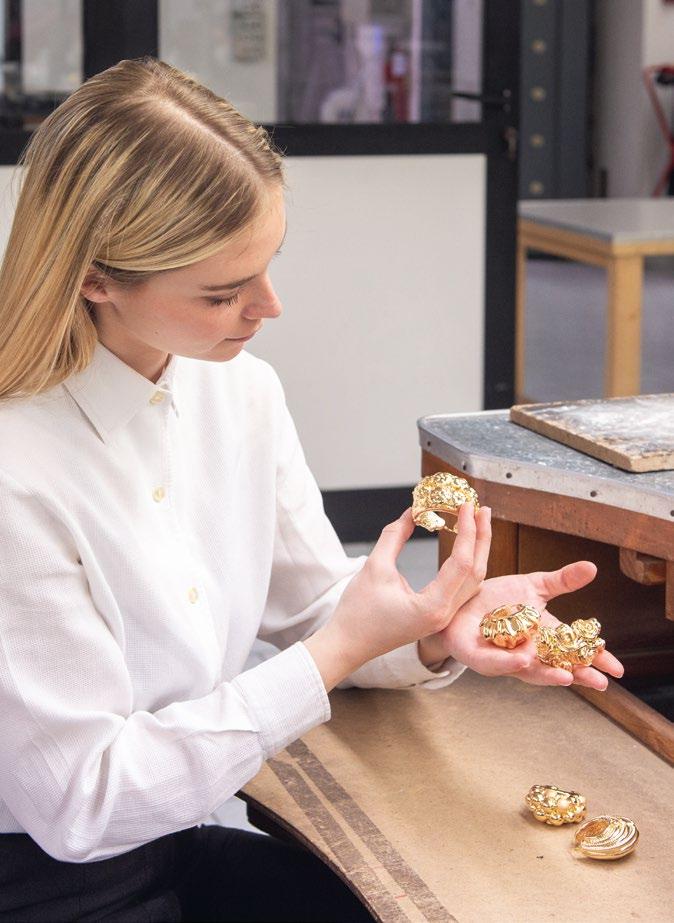
For more than 25 years in the jewelry world, Elina Peduzzi brought her passion from Uruguay and Venezuela to California where she founded her brand in 2018. With a background in international relations, Elina has developed a strong curiosity towards world cultures and adornments. «My passion for jewellery came from the manufacturing process. During my first jewellery lesson I made the alloy to create an ingot and then I transformed it into a ring. It was magical! I felt I would do it forever». Elina’s creations are inspired by ancient adornments, such as the wax African works that inspired the Heritage Collection, and influenced by her trips and love for history, craft and world cultures. They are the bridge to connect past and present. The designer uses several metals and, in particular, bronze, an alloy deeply connected with human history, and silver. «I design jewelry for people who appreciate art, handmade objects and the diversity of cultures around the world». Elina’s jewels are available on her e-commerce elinapeduzzi.com and in exclusive art and craft exhibitions around the USA. «I would like to expand the distribution also in Europe. I have several exciting new collections in progress and I will also go back to my origins in small sculpture by introducing a line of art objects».

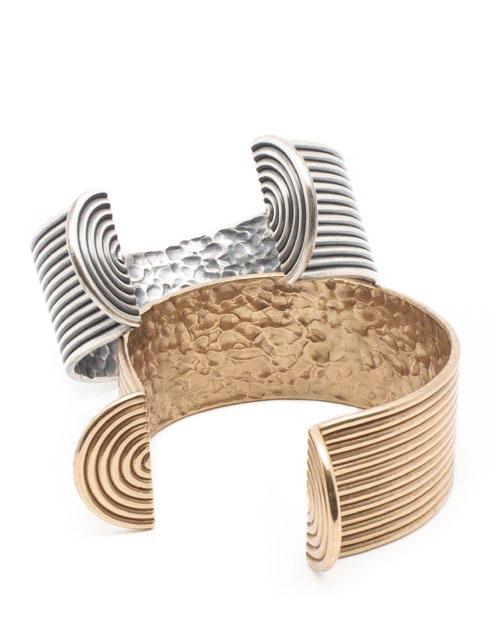




www.dorottyahoffmann.com

@dorottya.hoffmann.jewelry
 by Domenico Festa
by Domenico Festa
from the luxury world
Photo: Riccardo Ferrato
Stylist: Nicolino Martino
MUA: Angelica Coluccini
Hair: Alberto Luti
Models: Gytis Gedvilas / Daseul Kim
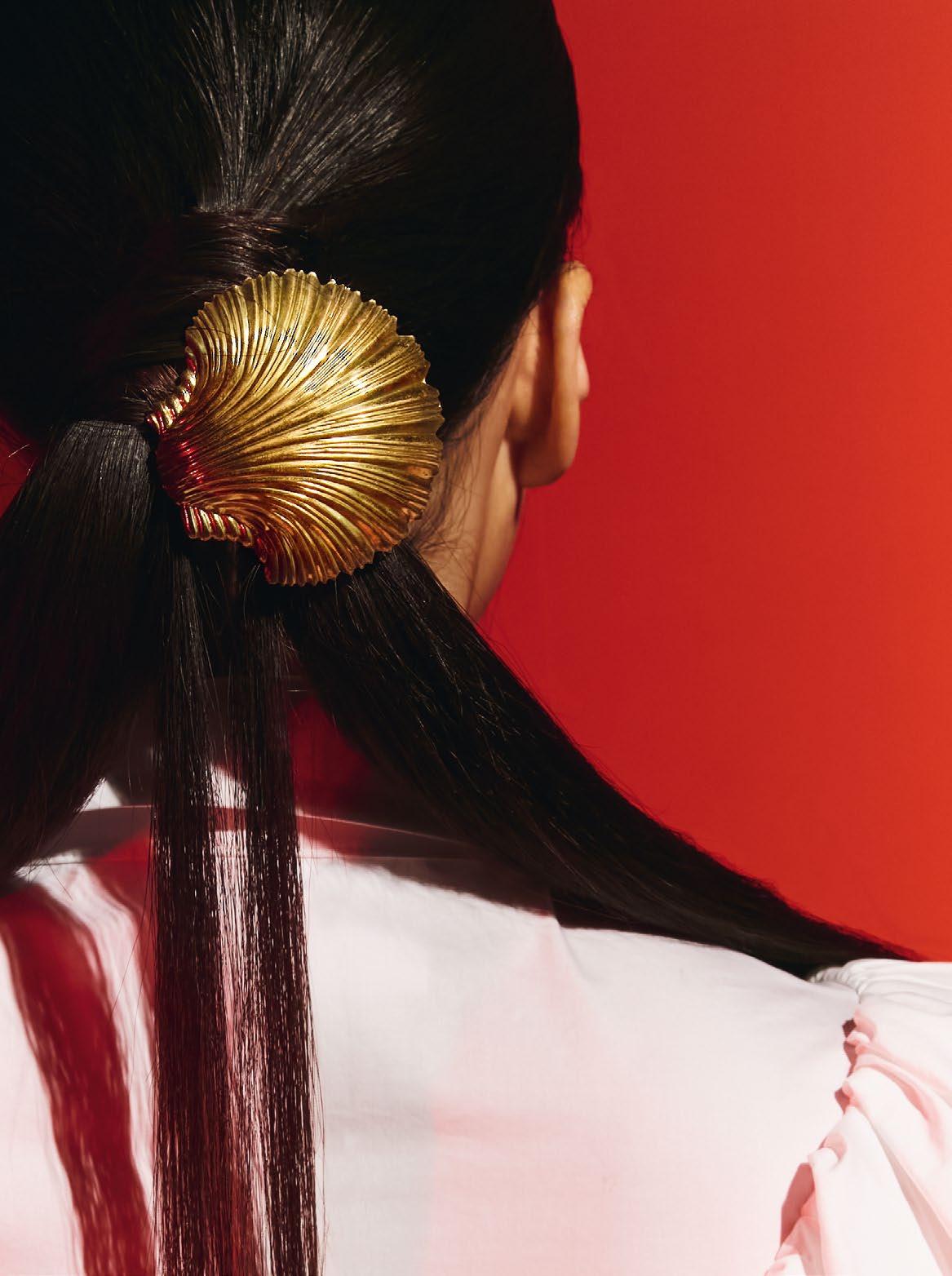

 On these pages: sterling silver earring by futuroRemoto. Shirt: Tombolini. Skirt: Simon Cracker Milano. Boots: Collini MIlano 1937.
On these pages: sterling silver earring by futuroRemoto. Shirt: Tombolini. Skirt: Simon Cracker Milano. Boots: Collini MIlano 1937.

 On these pages: sterling silver earring by futuroRemoto; silver bangles and ring by Francesca Castiglioni Jewelry. Page alongside: men’s shirt by Tombolini. On this page: shirt by Flavia Mardi. Trousers by Francesca Cottone.
On these pages: sterling silver earring by futuroRemoto; silver bangles and ring by Francesca Castiglioni Jewelry. Page alongside: men’s shirt by Tombolini. On this page: shirt by Flavia Mardi. Trousers by Francesca Cottone.

 From top: Victorian age original necklace with a pendant in bronze and brown diamonds; bronze necklace with brown diamonds. Both by Barbara Biffoli. Corset: Leonardo Valentini.
From top: Victorian age original necklace with a pendant in bronze and brown diamonds; bronze necklace with brown diamonds. Both by Barbara Biffoli. Corset: Leonardo Valentini.
 On this page: Luce necklace and earrings in sterling silver and cubic zirconia by Lucedeimieiocchi. Long-sleeved shirt: Collini Milano 1937. Dress: Collini Milano 1937.
On the page alongside: 18 carat gold ring with golden pearl by Lucedeimieiocchi. Long-sleeved shirt: Collini Milano 1937.
On this page: Luce necklace and earrings in sterling silver and cubic zirconia by Lucedeimieiocchi. Long-sleeved shirt: Collini Milano 1937. Dress: Collini Milano 1937.
On the page alongside: 18 carat gold ring with golden pearl by Lucedeimieiocchi. Long-sleeved shirt: Collini Milano 1937.

 On these pages: silver earrings with brown diamonds by Barbara Biffoli. Men’s blazer: GRK. Women’s blazer: Tombolini.
On these pages: silver earrings with brown diamonds by Barbara Biffoli. Men’s blazer: GRK. Women’s blazer: Tombolini.
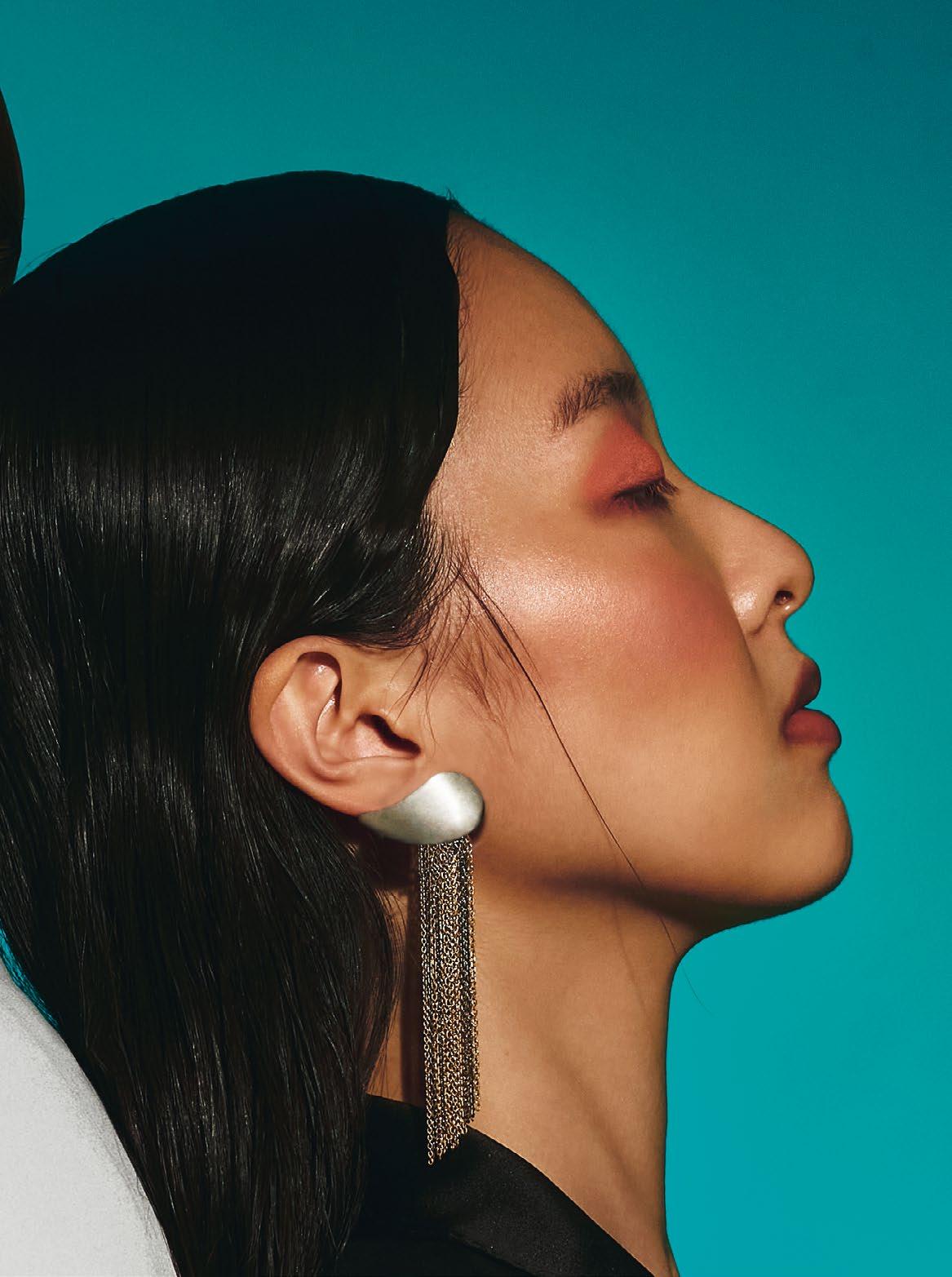

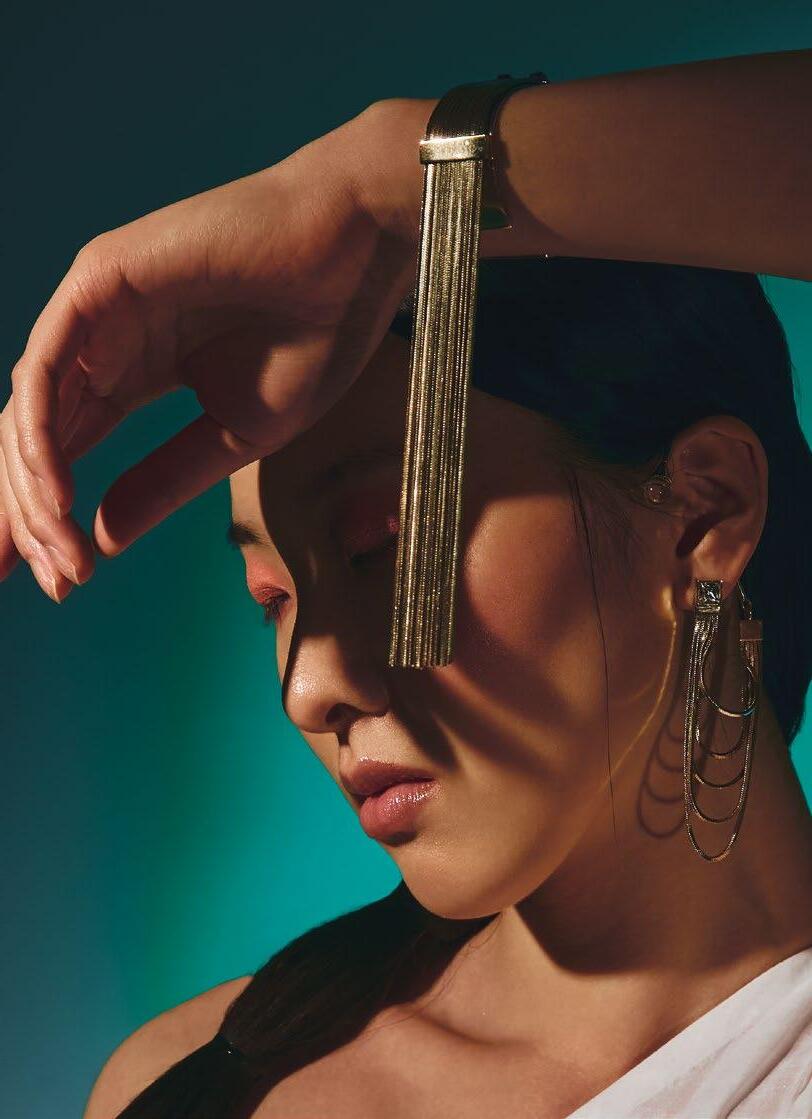 On this page: 24 carat gold plated brass earring and bracelet with Swarovski crystals from the Eldorado collection by may mOma. Suit: GRK. On the page alongside: body chain in sterling silver with Mallorca pearls by futuroRemoto. Suit: GRK.
On this page: 24 carat gold plated brass earring and bracelet with Swarovski crystals from the Eldorado collection by may mOma. Suit: GRK. On the page alongside: body chain in sterling silver with Mallorca pearls by futuroRemoto. Suit: GRK.
 On this page: brass ring by Petra Mohylova. Gilet: Collini Milano 1937. Page alongside: necklace in 18 carat gold plated brass with zircons by Federica Rossi Jewels. Dress: Collini Milano 1937.
On this page: brass ring by Petra Mohylova. Gilet: Collini Milano 1937. Page alongside: necklace in 18 carat gold plated brass with zircons by Federica Rossi Jewels. Dress: Collini Milano 1937.

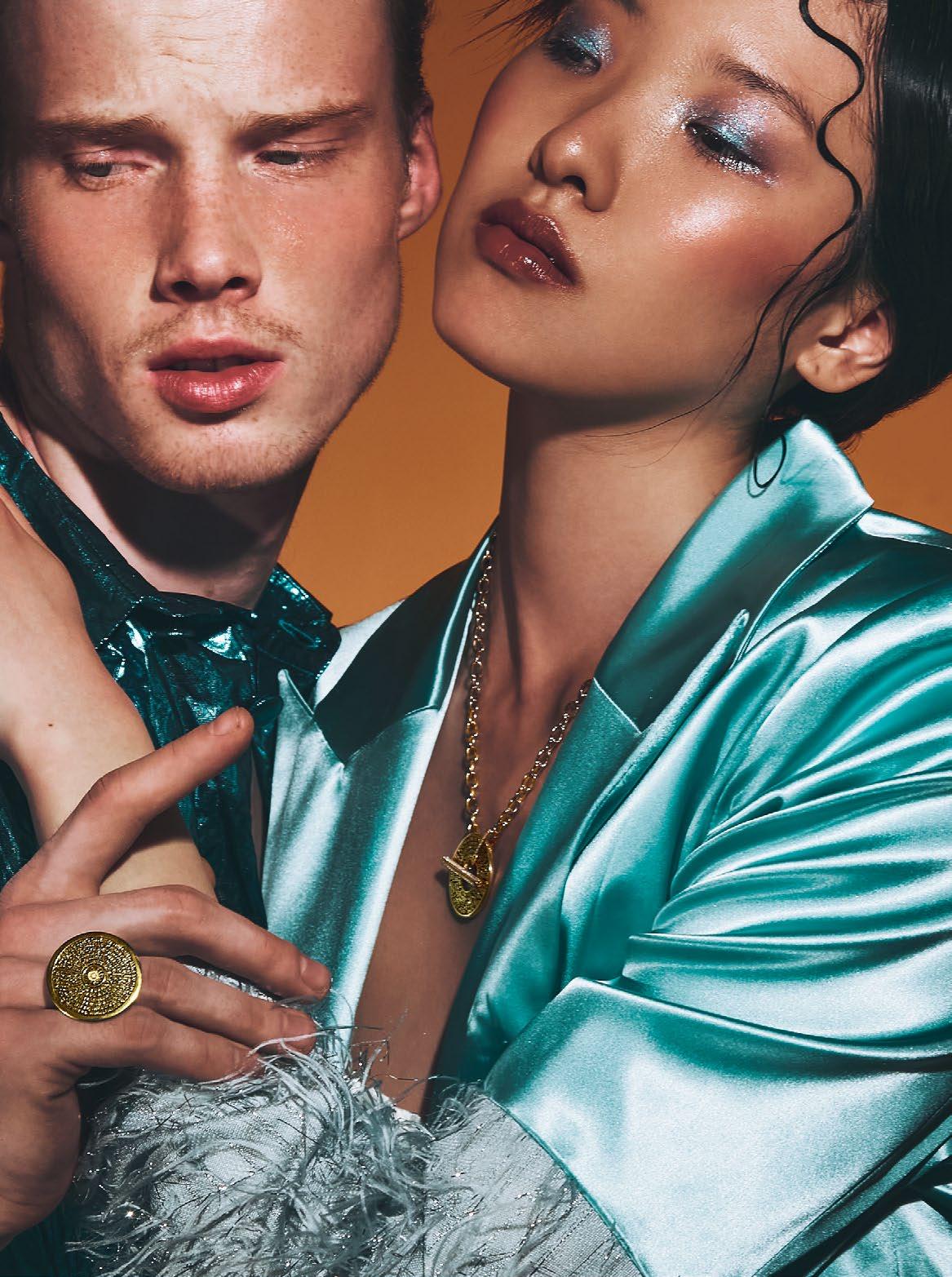 Necklace and ring in sterling silver from the Era collection by Ellius Jewelry.
Shirt and blazer: Collini Milano.
Necklace and ring in sterling silver from the Era collection by Ellius Jewelry.
Shirt and blazer: Collini Milano.
 by Donatella Zappieri
by Donatella Zappieri
Bebe Bakhshi is a Persian born, Melbourne based jewellery blogger whose love for jewels started when she was a child, growing stronger over the years: she finally decided to attend a GIA AJP course to deepen her knowledge about her passion objects.

While finalizing this course, she moved with her husband to Melbourne, Australia to start a new life and that’s where she had the idea to convert her passion into a professional activity, launching her blog ChampagneGem.com back in 2011.
By 2013, ChampagneGem on Instagram was also born and Bebe started traveling the world finding the most exquisite jewels to share with her followers. Today, her Instagram account counts more than 700.000 followers and is synonymous with original content, showcasing personally selected pieces from globally known high jewelry brands. It is a niche platform for connoisseurs, industry leaders and every individual with interest in jewellery. We had a chance to meet her during Vicenzaoro.

How do you select what to post and what kind of audience do you wish to inspire?
I usually don’t schedule my posts. Depending on my mood, I will choose either a diamond centred post or gemstone and of course my audience input is very important, some days you notice they are more intrigued by design oriented pieces and other days just classics. In other words, it’s a combination and I am trying not to stick to a certain theme (either gemstone or design) for more than 2-3 posts.
My motto hasn’t changed since I started my blog back in 2011, maybe slightly tweaked, but the main goal remains the same: your daily dose of sparkle! My follower base ranges from 16 years to older: particularly with millennials and generation Z, I try to put emphasis on the importance of transparency and ethical sourcing of diamonds and gemstones. The ultimate goal is to encourage my audience to appreciate and admire jewellery and take informed decisions when making a purchase.
You have many collaborations with wellknown brands. How do you organize the content in order to keep a balanced eye and be always at the forefront of the latest collections ?
I have been working with many brands in the past 6-7 years and many of them have their fixed spot on my page. Loyalty and trust play a great
role in purchasing something sentimental as jewellery and my followers trust my judgement, therefore I have the responsibility to protect their trust by featuring only reputable brands that carry similar vision and business values as mine.
What are your “tricks” to get people’s engagement and interest, since you have a great number of followers?
I have a very simple yet effective formula, consistency! Finding your niche and being consistent with your content. I personally reply to every single comment because I enjoy communicating with my followers - we all share the same passion. I also include interesting facts in my captions to capture my audience’s attention and intrigue their curiosity, which eventually starts a conversation and helps me to get to know more about their preferences. Over the years, I also had the chance to personally meet many of my followers and made virtual friendships which to me are as real as face to face ones. To sum it up, consistency in content, communicating with followers.
In what way you think you are bringing your own vision about the jewellery industry?
I think I helped shaping a community of jewellery enthusiasts, connoisseurs and designers. I created a space where they can explore the latest trends and collections. As for my vision, I love wearing/ layering/stacking jewellery, the terms “dripping in diamonds” and “more is more” are two that I use a lot. Some argue asking me what is the point of showing so many diamonds at the same time and my answer is that this is only to show possibilities and options that you have when adding jewellery to your style. There is no right or wrong, just do what makes you feel good, and at the end of the day we buy jewellery to celebrate, so let’s have some fun with it.
What about new talents? Do you also have your way to “recognize” the artists of tomorrow?
I believe social media have an important role in raising the bar for market’s taste and desire in unique jewellery. Based on my experience, I
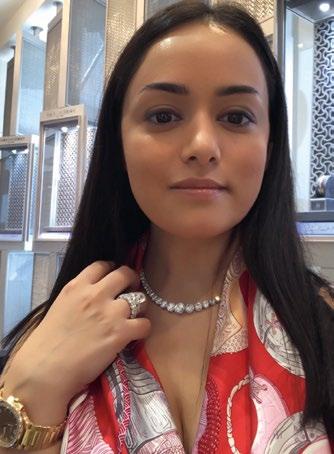
have seen that my followers’ preferences have heavily evolved in the past few years and when I post a design oriented piece, they have genuine appreciation for the design, craftsmanship and hours that are put into creating such a piece. Complex pieces, wearable art and unique creations are what attract the younger generations. Therefore I am always looking for more innovative designs and in recent years there has been a rise in bespoken pieces, where designers combine different methods, metals or gemstones to create a unique piece.
Which stones do you fancy the most? What jewellery styles?
Diamond is my most favourite stone and it helps that it is my birthstone too. I have developed a soft spot over the years for Paraiba tourmaline, ruby and emerald too. I am somehow obsessed with rings and bracelets, as you can see it translated in my posts; those two are my favourite jewellery styles.
Do you take pictures on your own or do you have a team?
I have a partner,Tracey Ellison,TheDiamondsGirl: together we attend most of the events and exhibitions. As for filming, pre-pandemic, I used to create all of my original content but since pandemic and shift in world’s dynamic in terms of traveling I had to rely on our clients to create content that I could use on my page. Since Tracey is based in the US and can travel without any restrictions, she has been creating content for me for the couple of shows that I couldn’t attend.

The atmosphere felt when entering the Brian & Barry Building is that of a large family working as one, right from the gallery on the ground floor to the lounge bar on the terrace. The spirit that unites not only the different floors of the building, each dedicated to a different product, but also those who work on those floors is fuelled by a strong identity instilled by the Zaccardi Family, owners of the building, and by the desire to tell the stories of companies that make Milan a cosmopolitan and international capital. The building is arranged as a hub of ideas and innovations in the fashion and accessories sector, but also in the worlds of food, sport and beauty. The second floor dedicated to jewellery and watches lets you dive into a world of diversity, as defined by Francesca Ventura herself, a business consultant who has been working alongside the owners for years in choosing jewellery brands. «In our meeting place you can find many different stories, each characterised by its own identity that distinguishes it from all the rest and that enables jewellery to go beyond being a simple

product to buy and become an object that transfers messages and emotions. In every space, brands can communicate their DNA and tell stories». The different corners take on the look of the brands they welcome thanks to the possibility of customising the set-up with colours and symbols that let you immediately recognise the company. The jewellery floor also offers its partners the opportunity to benefit from wide-ranging communication, marketing and distribution development services. «The second floor was originally created as a meeting point for the great luxury brands where international customers could shopcontinues Francesca - Over the years, however, we felt the need to make ourselves stand out from the other department stores and offer something different from the many singlebrands that surround us». The focus of the floor has therefore become the personalisation of services and opting for original stories, from a brand that uses fabrics from Japan to unique jewellery with priceless precious stones. The winning formula therefore seems to focus
on offering an experience and, in the case of Brian & Barry, it’s a vertical experience that involves all the floors of the building with several references that guide the customer towards the world of jewellery found on the second level. «Our target isn’t the individual but the city of Milan and Piazza San Babila, a gateway through which the entire world passes. For this very reason we felt the strong bond with Milan Jewelry Week that from Milan opens to the world involving a refined selection of Italian and international artists of contemporary jewellery». During MJW, which will be held from 20 to 23 October, the Brian & Barry Building will host artists and events that form part of the program.


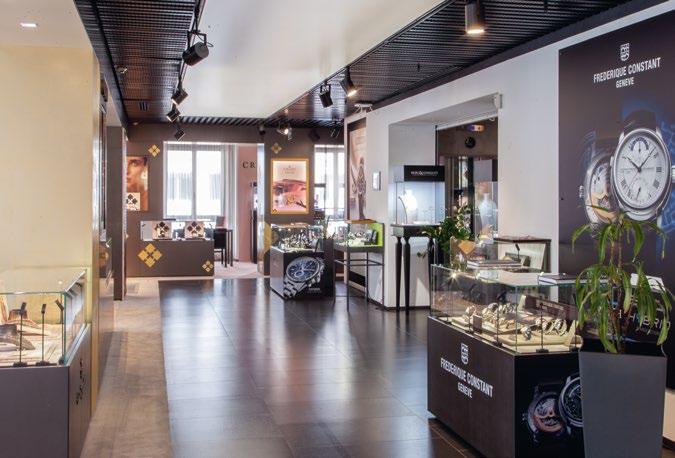


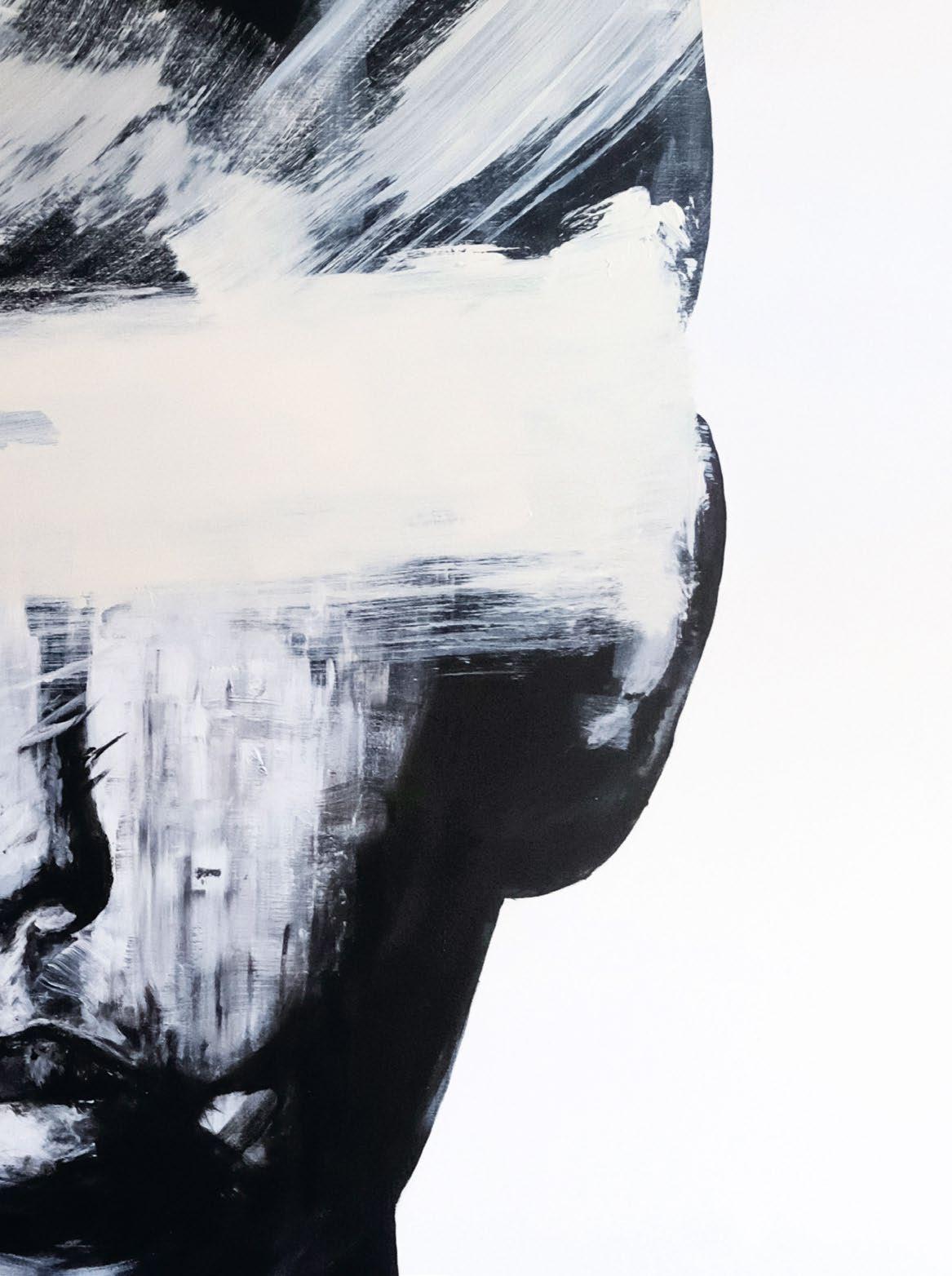
Interconnection: a mix of 12 emerging and established artists shared their passion in a group exhibition in Genoa.

Interconnection, in art but also in everyday life, has become a common experience to which we have got used thanks to new communication and information technologies. We live in a new space continuously built and reconstructed by the interactions between physical and virtual objects; a space whose dual nature, real and virtual, allows interactions between people, ideas, and places, thanks to concepts such as networks, globalisation, and the digital world. This modern-day setting has led to the Artitoode project – exhibition event, social commerce platform (Artitoode.com) and original editorial project – whose aim is to be an exclusive and international reference point for the art world and which is focused on the community of painters, sculptors, video artists, photographers, gallery owners, collectors, auction houses and experts in the sector favouring interconnections, thus opening up to the natural dimension in which, according to some scholars, new ideas are born and flourish. The goal of the Artitoode exhibition, in which works by emerging and established artists come together, is questioning the new cultural dimensions born in the current context and the result of the continuous exchange between virtuality and materiality, between local and global environments the distance between which has all but disappeared, but also about the relationship between us and the concept of place, which in the meantime has taken on different and ambivalent values.
The group exhibition, which took place at the end of April (29 April - 12 May 2022), was hosted in Genoa in the sixteenth-century Palazzo Grillo, an interesting location both for the stunning façade frescoed by the “Bergamasco” and for the cycle of paintings that embellish the main floor, the exhibition venue itself. This enchanting setting played host to proposals aimed at investigating the theme of the physical relationship between mankind and the space-time dimension in which it is immersed as emblematically expressed Untitled, 2018 (hyper-realistic work in silicone, fishing line, yak hair and human hair) by Valter Adam Casotto, an artist also renowned in the film industry, that reflects “humanising” a watch with supernatural dimensions giving it the texture of human skin, an organ that changes more than any other, reflecting the natural passing of time. Instead, with Blanc et Ébène, the already appreciated painter Giuseppe De Faveri, master in the union between abstract and real, focuses on what most characterises human faces, the gaze and its unstoppable presence and importance. An almost dreamlike dimension emerges in the static works of the young artist Federica Poletti, as for example in The Void, formed through cancellation, subtraction, and distance that speaks of a non-definition of identity and solitude as the only way to listen to oneself, while for the Genoese artist Safu (Fulvio Salvi), a passionate collector of design, the relationship with the physicality of his work is central, such as in Heaven, where gestural brushstrokes give life to a figurative world characterised by primordial, distorted and lively images, all trying to shake the viewers, acting on the senses.
Multisensory is also the key word of the sculptural work of Paolo Nicolai who, with Memorie di testa tagliata, invites one to caress, break, open the work of art, to bypass the classic prohibitions to know, to grasp the physical essence of sculpture that, like other living beings, is the bearer of the traces of a past, single encrusted pieces that become the body, be they plastic, mineral or metal. The forms of artistic expression on display


also include that of illustration, rightly so, a narrative form that leaves ample freedom of expression as evidenced by the visual work of the Turin illustrator Luisa Piglione. Using the image often by combining it with words to amplify its effectiveness is what happens in Oltre, a portrait of a woman diving from a trampoline composed with the text of a poem by Anne Michaels (Lake of two rivers), which recounts that moment that precedes the future, of bravely throwing oneself without a safety net, of confidently “pushing oneself”. With many other works on display (in addition to those already mentioned, the painter Attilio Cianni, the sculptors Gennaro Barci and Marcello Silvestre and the performances of
CRI ECO, Claudia Taccia and Grazia Inserillo have also been exhibited) Artitoode has nurtured the comparison between tradition and innovative artistic proposals by working around the introspective investigation that links dream, memory, remembrance, dimensions that find their logic, not Cartesian, in a space of artistic creation, often elusive, but always a place of reflection and rebirth for artists and inspiration for the public.




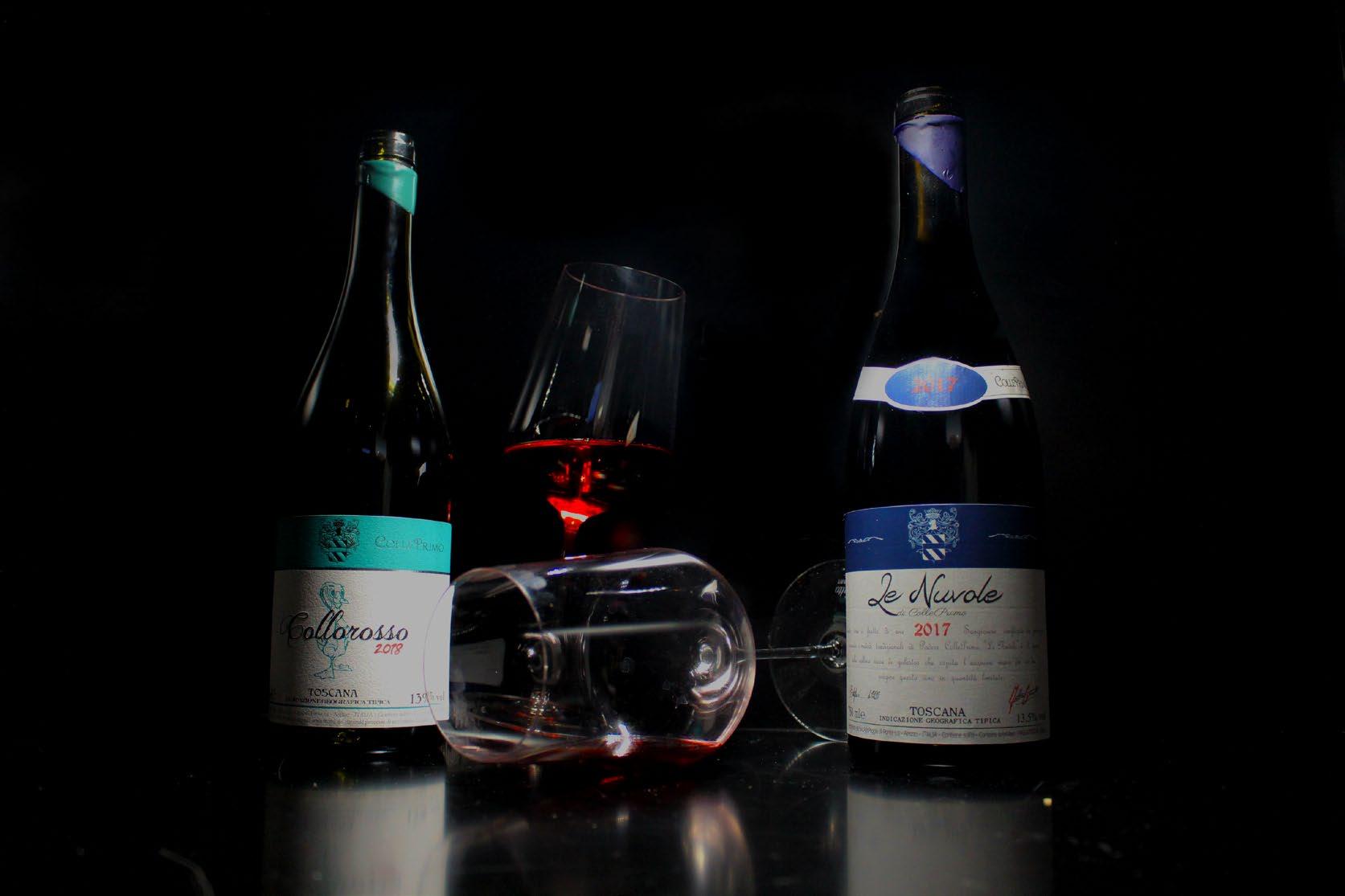

 by Rosa Chiesa
by Rosa Chiesa
The outdoors as an extension of the indoors: it happens with fashion that adorns the body, but today it happens above all with the home which, from an intimate refuge, expands to accommodate new comfortable and increasingly less temporary spaces. Recent limitations have perhaps facilitated a trend which had already been underway since living spaces shrank in favour of an open-air corner: patios as a projection of living room relaxation, verandas as orangeries where you can read in the green, terraces where you can share moments of socialising and even small balconies to pamper with flowers, all become design opportunities for practising the concept of “outdoor interiors”. There is a return to natural materials, wood first of all, which guarantee wellbeing but at the same time interpret contemporary charm and expressiveness. This happens with the Calipso system for Ethimo, which, as designer Ilaria Marelli says, redefines the concept of the outdoors, favouring modularity and versatility: «All the elements that rest on the ‘oversize’ teak base can be freely positioned to be moved as you like». Since 2009, the year it was founded, Ethimo, a family-run business coming from the outdoor and gardening world, has been able to integrate new managerial skills, establishing itself as one of the major players in the outdoor sector, with balanced, contemporary proposals that blend well with the beauty of the Mediterranean landscape (and beyond).
Emu, a historic company founded in Umbria in the 1950s, since 2017 back in the hands of the founders’ family and now an international player, is known for having introduced design to the outdoor sector, and has always stood out for its constant investment in technological innovation with an eye to the environment. The study on the development of the material mix has recently suggested the combination of aluminium and steel with teak seats, generating collections suitable for indoor and outdoor use. Teak and steel converge in Florent Coirier’s revisited Lyze seating collection as well as in Arik Levy’s

Design moves seamlessly from the inside to the outside, configuring flexible outdoor spaces, like stages immersed in the landscape, in the name of comfort and practicality.
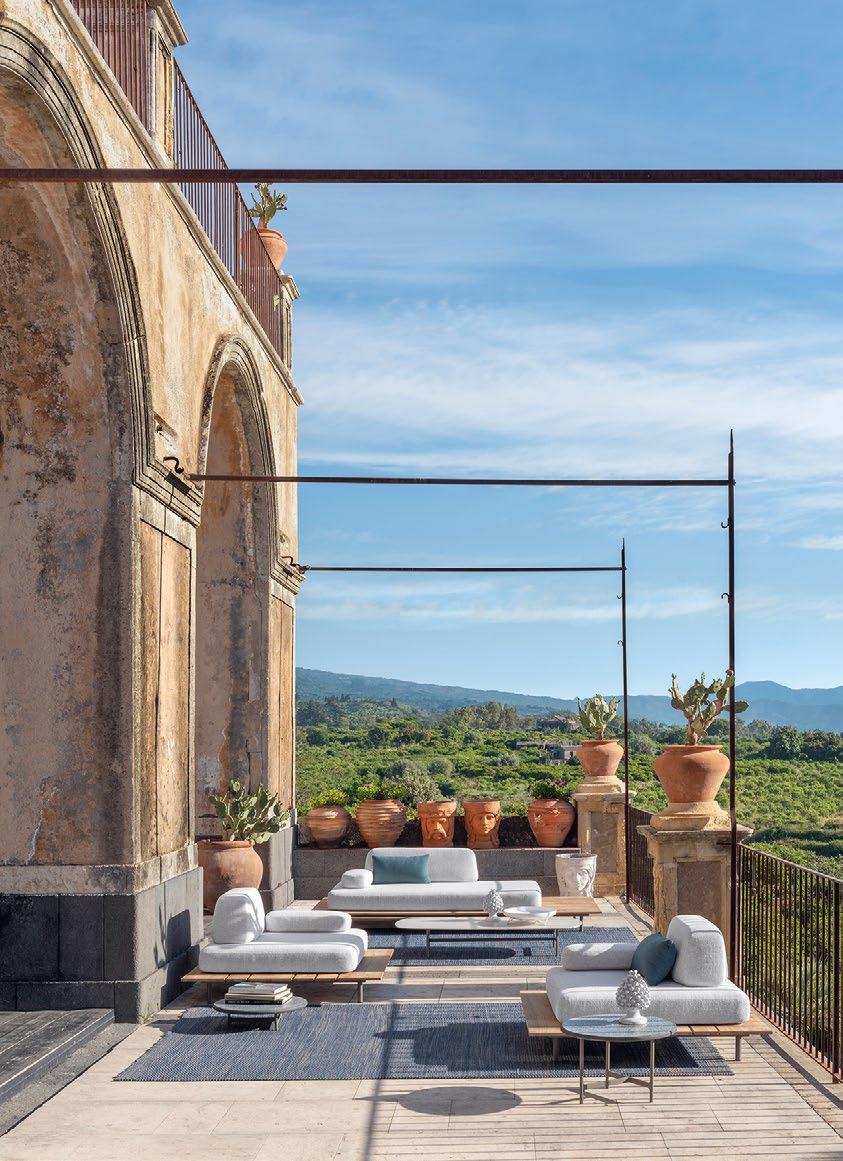
essential Shine collection, which in addition to seating includes tables with teak tops.

The Jeko outdoor collection designed by Paola Navone for Gervasoni has an elegant yet informal decontracté style. Teak salvaged from the demolition - authorised by the local authorities - of traditional wooden houses on the Indonesian island of Java, cut, assembled and finished by hand, becomes the structural element (ECOTeak) for the collection with its clearly exotic inspiration. With over 130 years of activity, the small Udine-based craftsman’s workshop Gervasoni has been able to transform and expand its range of outdoor and indoor products, creating, thanks also to the creative contribution of Paola Navone’s art direction, a recognisable style of outdoor living. Established in 1882 and currently managed by the third generation of the family, the company became part of IDB, Italian Design Brands S.p.A., in May 2015.
Paola Lenti’s style is light-hearted and cheerful. The company was founded in 1994 in the heart of the historic Italian furniture district, in Meda, and is famous for its propensity for innovation expressed in the development of high-performance yarns and in the development of technical fabrics, specifically for outdoor use and now also for indoor use. With an international distribution, Paola Lenti offers colourful collections of seating, carpets and structures for the residential and nautical
sectors. The contemporary style of Mogambo, a non-closable sunshade, together with Shell pouf, in polyurethane with water-repellent finish, is the result of a manual weaving obtained with Samo rope, an exclusive Paola Lenti material produced in rope yarn with a wide palette of mélange colours for the sunshade and hundreds of nuances for the seat.
A combination of elegance and simplicity, geometric patterns and softness characterises the CleoSoft collection by Marco Acerbis for Talenti. The ever-present wood in the modular and customisable sofa is combined with the elegance of the textiles and cushions - padded with quick-dry foam and upholstered with removable fabric - to project indoor comfort onto the outdoor environment.
Founded by a family of entrepreneurs, the Umbrian company Talenti, now a leading player on the international market, has chosen the path of design, functionality combined with aesthetics and quality to offer outdoor furniture that betrays a strong link with traditional craftsmanship and constant attention to innovation. Talenti boasts collaborations with important international designers and has an important network of flagship stores that represent its values throughout the world.

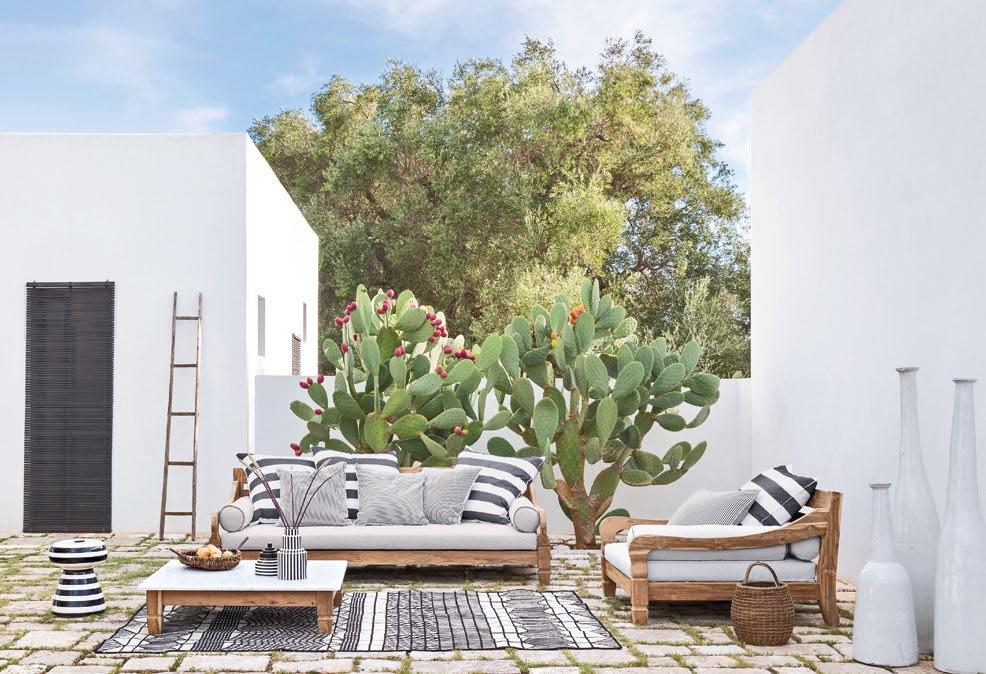


You get a different perspective travelling on the sea, part a prisoner on board and part a free man, moving without boundaries. The boat becomes the means, indeed, to get to a place, but also to experience unique emotions and a life among the horizons.
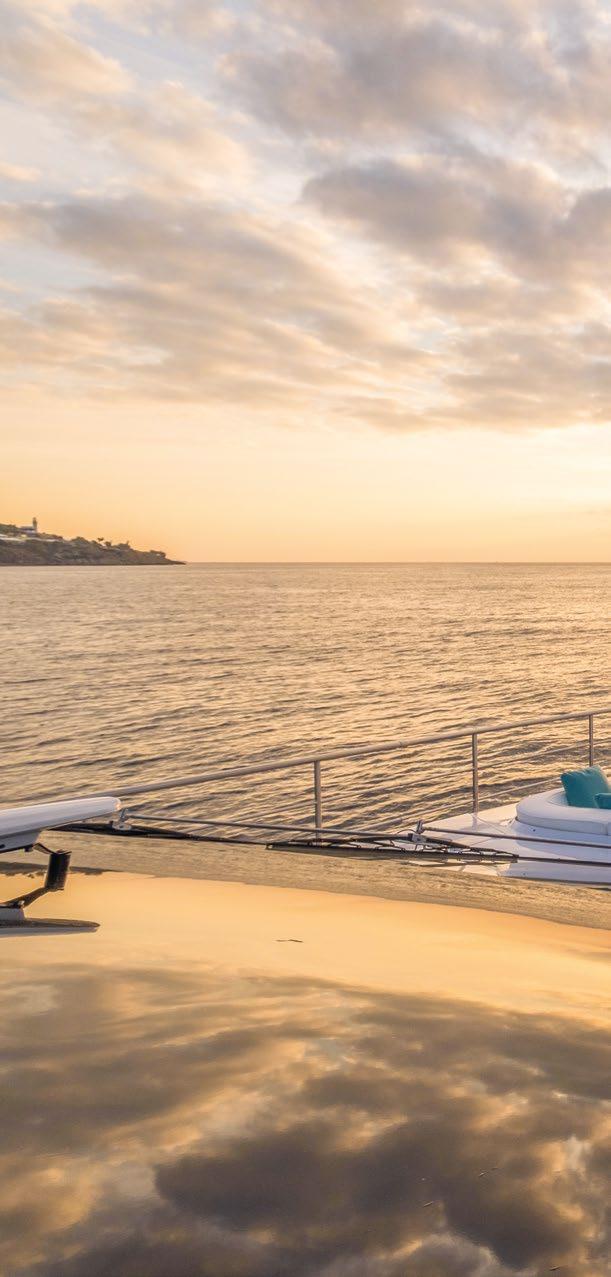 by Paola Bertelli
by Paola Bertelli

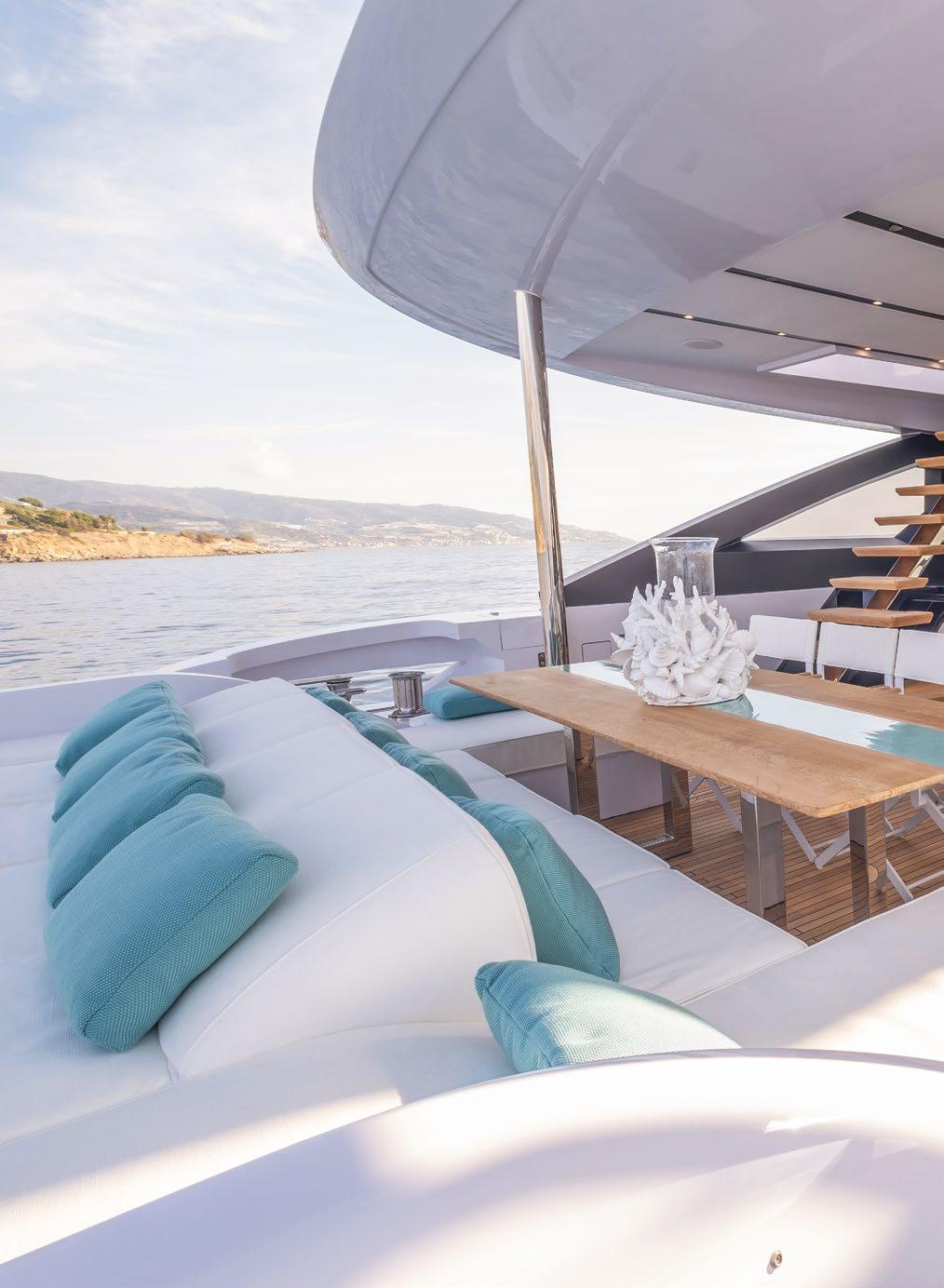
Today’s yachts are opening up more and more to the sea, seeking total connection both inside and out. The Permare shipyard’s Neva (a 35.54-metre Amer 120) sculpts views through large floor-to-ceiling windows overlooking the water. The interiors are flooded with light and reflections to underline the dynamism of the sea.
Permare goes further, and in this refined yacht it creates an interesting blend of design, circular economy, attention to the environment and technological innovation.

For years this Ligurian shipyard, which specialises in yachts and superyachts “tailormade” for different owners, has been carrying out studies and research to make its boats more sustainable; on Neva the most radical choice is the glass and steel cage on the main deck, which encloses the saloon and owner’s suite and saves 4 tonnes of fibreglass (a material that cannot be recycled at the end of its life). «We think that this new building solution had to be an example of opensource information, this is the reason we shared the information. On sustainability matters it is so important sharing information with the sector because only by pushing research in different directions could we amplify the good results saving time and energies» points out Barbara Amerio, CEO of Permare.
On the floor, the teak here has been given a second life, coming from old farmhouses, it has been worked and cut into staves by an Italian craftsman, and now it envelops the room with the unique scent of old wood: it is rough, irregular, natural, it feels like walking on a beach. Interior designer Stefano Tini has combined the warm tones of teak with noncolours such as white and violent flashes of turquoise. And then finishes in eco-leather, cellulose, wool and marble. «On board there is no excess of design, I didn’t want objects or finishes that would catch too much attention, I favoured elements that would settle down and adapt to the environment. I worked to create an extreme sense of relaxation, to put people at ease on board» explains Stefano Tini. Seen from the sea, a few sharp, dynamic
lines run from bow to stern and define the silhouette of this large floating villa; Andrea Ramasco drew them: «I look for extreme formal simplicity in all my designs, and from my point of view, if there are 3-4 lines on a freeboard, that’s already too many. Clean lines may not have the same impact, but they are timeless and never tire the observer».
Neva has three bridges. In the external saloon aft of the main deck, two symmetrical staircases become an architectural element and ideally separate two different lounges, one more convivial and the other more private, leading to the interior saloon - the scenographic wine cellar behind the dining table occupies the entire wall - and the owner’s suite forward. The upper deck overlooks the sea with halls, dining area, lounge, infinity pool, Jacuzzi, sundeck, bar counter and, in the centre, the command position, the technological heart of the ship together with the engine room on the lower deck. Below are the 4 guest cabins, which are deliberately twin spaces as the boat
is also intended for charter, and the beach club, which is the place that lives in the closest possible harmony with the sea, it’s a platform grazing the water with sofas, sundecks and water toys made available (tenders, jet-skis, seabob, sup...).
But how fast can you travel on board Neva? Permare is known for the sporty spirit of its boats, Neva has 4 Volvo IPS engines of 1000 horsepower each that push it to a cruising speed of 23 knots and a maximum speed of 27. These engines use proven technology, but the IPS installation on Neva is the most powerful yet. These engines are decidedly fuelefficient and make an important contribution to what is now one of the new luxuries on board: comfort in navigation, translated into silence, absence of vibrations, and stability. Because in addition to “how much you sail”, “how you sail” is increasingly vital.




«Clean lines may not have the same impact, but they are timeless and never tire the observer».

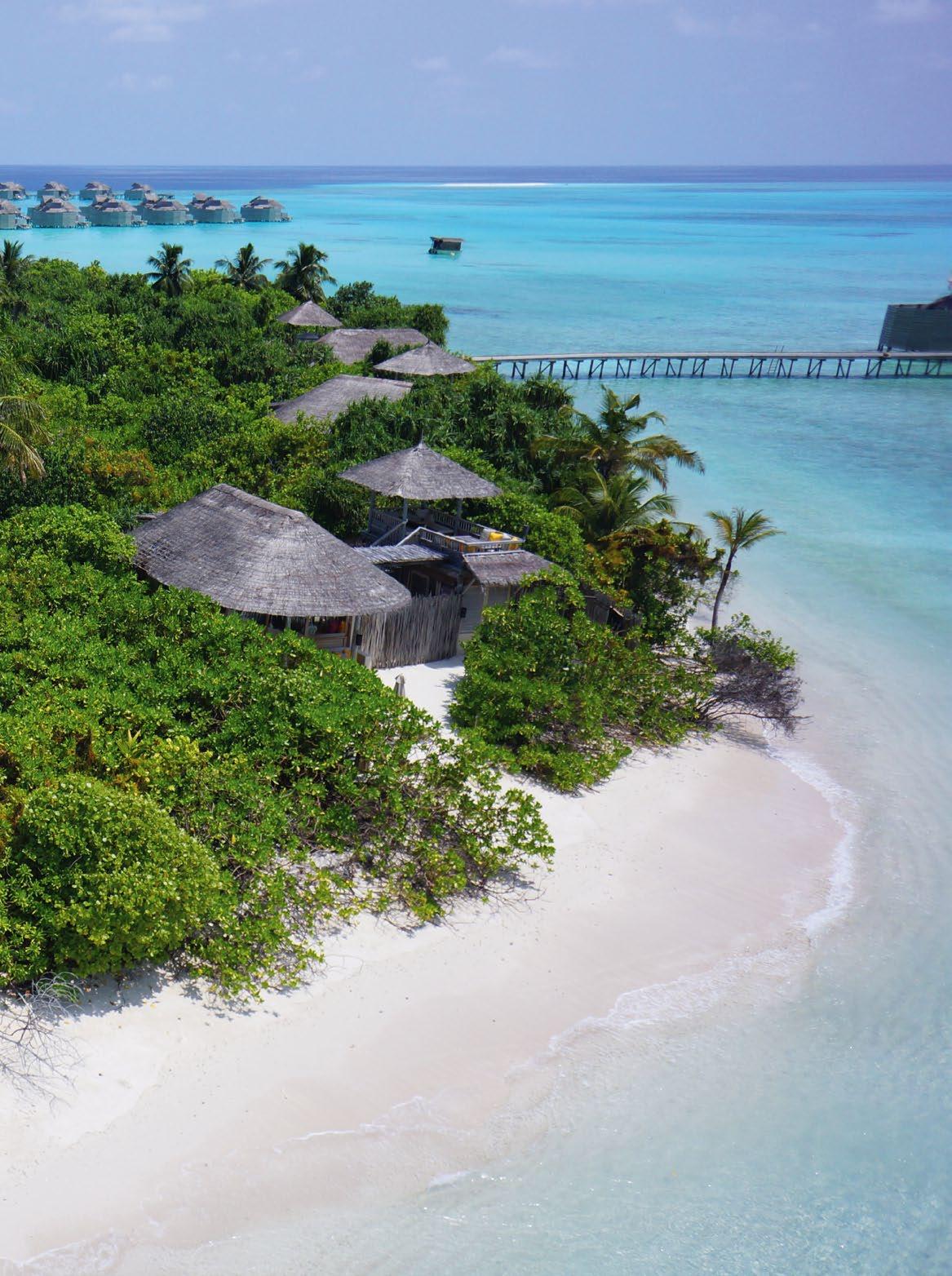 by Antonella Garello - Cristina Griner
by Antonella Garello - Cristina Griner


Villas made of local wood, on the beach or stilts, transparent floors to scan the seabed, roof terraces to admire the sky. And then bars and restaurants whose menus feature garden-grown products and freshly-laid eggs from a small flock of hens. Even the spa spaces, with thin coconut walls, have been created with minimal environmental impact; for treatments, they use products that grow on the island, such as ginger, cloves, nutmeg and coconut. Welcome to Six Senses Laamu, an eco-chic holiday paradise in the remote Maldivian atoll of Laamu (a 35-minute flight plus 15 minutes by boat from the capital Male). We are in one of the world’s most fragile ecosystems and tourist resorts must necessarily comply with all environmental sustainability standards. Six Senses Laamu is one of the most virtuous, the winner of two prestigious Skål International Sustainable Tourism Awards in 2018 and 2021, thanks to a team dedicated to marine conservation. Here, surrounded by virgin nature with sand as fine as talcum powder, palm trees and a crystal-clear sea with a thousand shades of turquoise, 96 villas welcome guests, accompanied by their personal butler, in a sophisticated and colourful environment. 26 of these are on the beach, with direct access to the sea, and 70 are on stilts, with wooden decks and transparent bathtubs and tables to never lose sight of the wonders of the underwater world. Even cafés and restaurants have been designed to make the most of the spectacle of nature, from sunrise to sunset. In the shade of lush greenery, The Leaf Organic offers Mediterranean-inspired dishes based on fresh products from the garden, while Longitude, completely overwaters, offers international recipes and Asian specialties. Finally Zen, the latest addition, serves a mix of Maldivian and Japanese cuisine. But the best place for a truly spectacular gourmet break is Altitude, a cellar with over 300 labels and glass walls for tastings in the middle of the sea.

The coral reef of Laamu atoll and its lagoon is a true paradise for all water sports lovers: from snorkelling and diving through to windsurfing, canoeing and sailing. For younger guests, aged 4 to 12, there are eco-friendly games to discover the beauty of the island and the Maldives in a dedicated space. And to enjoy wellness at its best, you can choose from yoga, holistic treatments, reflexology, reiki and shiatsu.

A beautiful and elegant city, the capital of Scandinavian design, but also of a green and sustainable lifestyle, pursued with determination: Copenhagen is a master of transforming former industrial spaces, a place where new architectures blend harmoniously with water, green areas and cycle paths, creating truly liveable waterfronts once home to the old port docks. This unique context, in the heart of the historic Christianshavn district, gave life to the five-star NH Collection Copenhagen, the first in the Danish capital, obtained from the former office building of a large shipyard thanks to a renovation project that ran from 2018 to 2021.
The original building’s character, designed by the Danish architect Palle Suenson and built between 1957 and 1962, is retained in the simple shapes and straight lines typical of that period, but it has been softened by the use of steel and glass and the creation of open spaces. Sustainability is what stands out most, the prime example being the energy-saving façade, whose cladding panels were made using materials from the internal demolition works. Other strengths are the sedum green roof, the use of sea water to cool the building, the smart light and internal air conditioning
system, and the extensive use of recycled wood for the interior. All aspects that have earned the hotel the coveted DGNB Gold Certification, which recognises the sustainable approach of the project and its social, economic, technical and environmental qualities.
It is a large hotel, with 394 rooms and suites, two restaurants, a bar, a lounge area, a fitness and relaxation area, and seven meeting rooms. At the entrance, what immediately grabs your attention is the work of the Danish artist Anna Bak, inspired by the maritime history of the building, whose interiors, by the Swedish design studio Krook & Tjader, recall the industrial and cosmopolitan atmosphere of the port. There is a warm, relaxed and eclectic mood, thanks to the harmonious play of colour and ad hoc designed furnishings that create a showcase of Scandinavian craftsmanship at its best, mixing woods, fine fabrics, and brass details. So much natural light floods the rooms, all with large windows to enjoy the stunning views of the city: maybe at sunset before being tempted by the freshness of the local seasonal ingredients and the creativity of the Spanish tapas served at the tables of the Tablafina restaurant and wine bar.


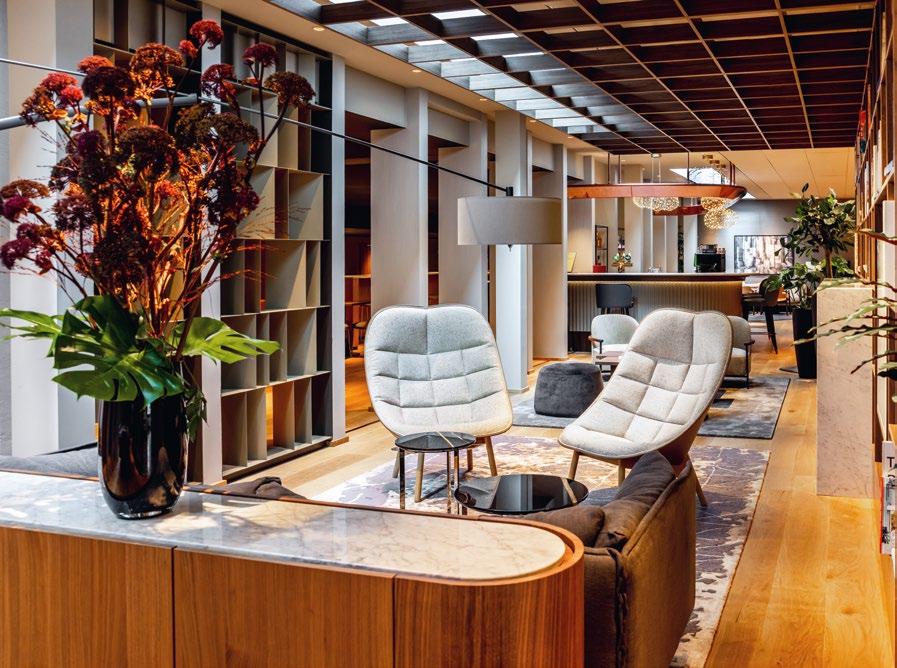


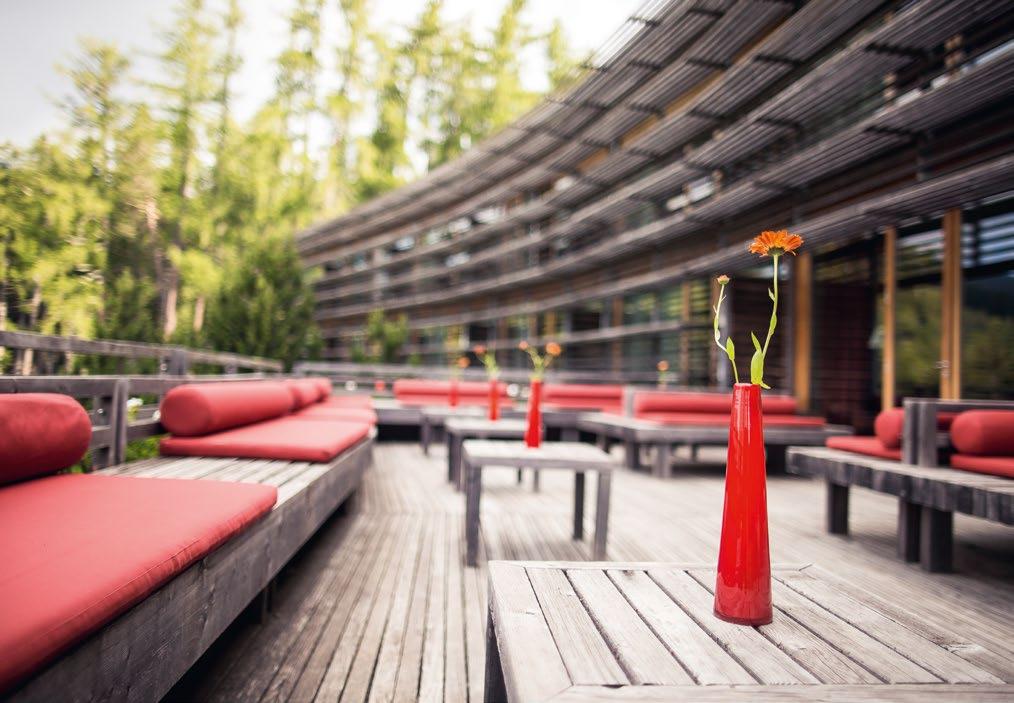

“Nature as a model and quiet as a goal”: this was what the Merano entrepreneur Ulrich Ladurner had in mind when, in 2001, he acquired the historic Berghotel in Monte San Vigilio, inaugurated in 1912. Immersed in an alpine environment, overlooking the Val d’Adige and the Dolomites rising high in the distance, the place had bewitched Ladurner as a child: at 1500 metres above sea level, reachable only with a short cable car ride from the village of Lana, a few kilometres from Merano, the building was surrounded by quiet, regenerating nature. They appointed Architect Matteo Thun to design what would become a celebrated 5-star eco-hotel, ensuring environmental respect and sustainability. The designer immediately embraced Ladurner’s ideas. The Vigilius Mountain Resort saw the light two years later: perfectly inserted into its landscape, it stretches out like a large tree trunk, and is mainly built out of larch wood, glass, stone and clay. Over the years, the Vigilius Mountain Resort has earned an international reputation as a model of sustainable tourism with minimal environmental impact; it has received awards and certifications from WWF, Legambiente, Eco Hotels of the World, among others. In 2010 it obtained the KlimaHotel certificate and, in 2021, the prestigious Earth Check Gold award; it is the only one
in Italy to have achieved this result, along with only two other realities in Europe. At Vigilius, everything is designed to improve sustainability: the thermal quality of the cladding and construction allows for reduced energy consumption, a radiant heating system provides ideal temperatures in all seasons, biomass is used as a combustible material, while the emission of pollutants and water consumption are significantly reduced. This ecological footprint and discreet design are combined with maximum comfort. Natural light floods the corridors and interior spaces; each room offers a magnificent view of the surrounding landscape and has a balcony or terrace with access to the garden. The spa area has a swimming pool with mineral spring water, a Finnish sauna, a Turkish bath, an outdoor pool overlooking a larch grove, a relaxation area and spaces in the basement for various treatments. The free move & explore programme includes many sports and fitness activities. The resort’s offer is completed by the 1500 restaurant, with gourmet dishes made with high-quality local products, “la piazza”, a cosy and romantic lounge area, and a rich library.
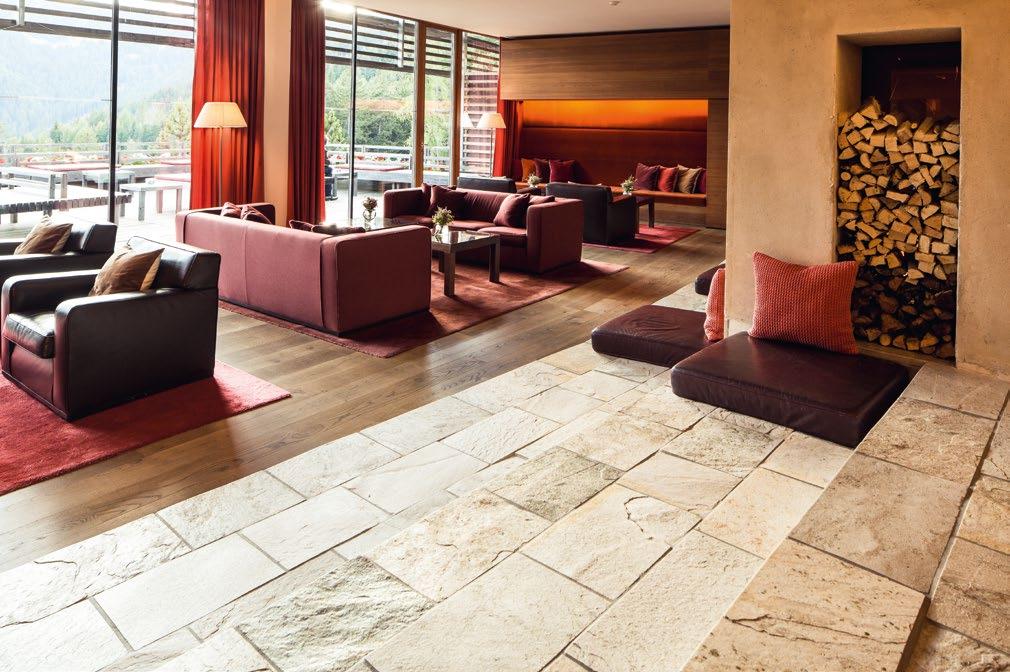
Organised jointly by the Musée des Arts Décoratifs of Paris and the Dallas Museum of Arts, which will host it until September 18, with the collaboration of the Musée du Louvre, Cartier and Islamic Art: in Search of Modernity explores the profound influence that Islamic art and culture had on the timeless creations of the French Maison.
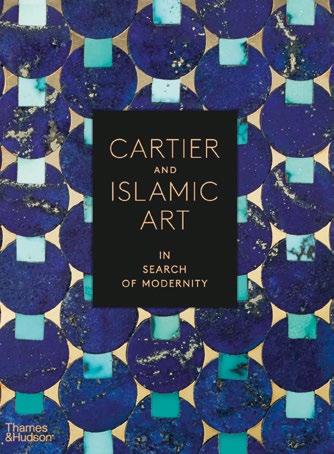
Hosted until February by the Musée des Arts Décoratifs in Paris, this beautiful exhibition landed at DAM in Dallas - the only stop planned for North America - offering overseas visitors over 400 objects from Cartier collections, museums and other international private collections. Alongside splendid creations by the jewellery house dating back to the early twentieth century, masterpieces of Indian and Persian art belonging to Louis Cartier (1875-1942), the creative soul of Cartier and cultured collector and admirer of Islamic art, historical photos, preparatory drawings and archive materials. Louis Cartier learned about Islamic art through important exhibitions held at the MAD in Paris and in Munich at the beginning of the last century (the show also features some finds from these exhibitions). Therefore, he and his designers began to experiment with new shapes and designs, crossing over into oriental history and culture in total freedom, inspired by Japanese fabrics, Chinese jades, Indian jewellery, architecture, and Islamic art forms. Cartier himself


possessed a significant collection of Indian and Persian paintings, manuscripts and precious objects, reconstructed in this exhibition, which proved to be another important source of inspiration. The exhibition also traces the travels to India and Bahrain made by Louis’s younger brother, Jacques, who brought back new materials, stones, colour combinations and processing techniques. In addition to the visual offer, the exhibition uses digital technology to allow visitors to trace the entire creative path followed by Cartier designers: the transformation of inspiring objects or motifs into jewellery decorations and finished objects, with brand new aesthetic codes that would later help define Art Deco and Cartier’s unmistakable style solutions.

With an original layout curated by the Diller Scofidio + Renfro studio, the exhibition also features an exhaustive illustrated catalogue, edited by Coline Aguettaz and published by the Musée des Arts Décoratifs in Paris in French and English, accompanied by critical essays and contributions.

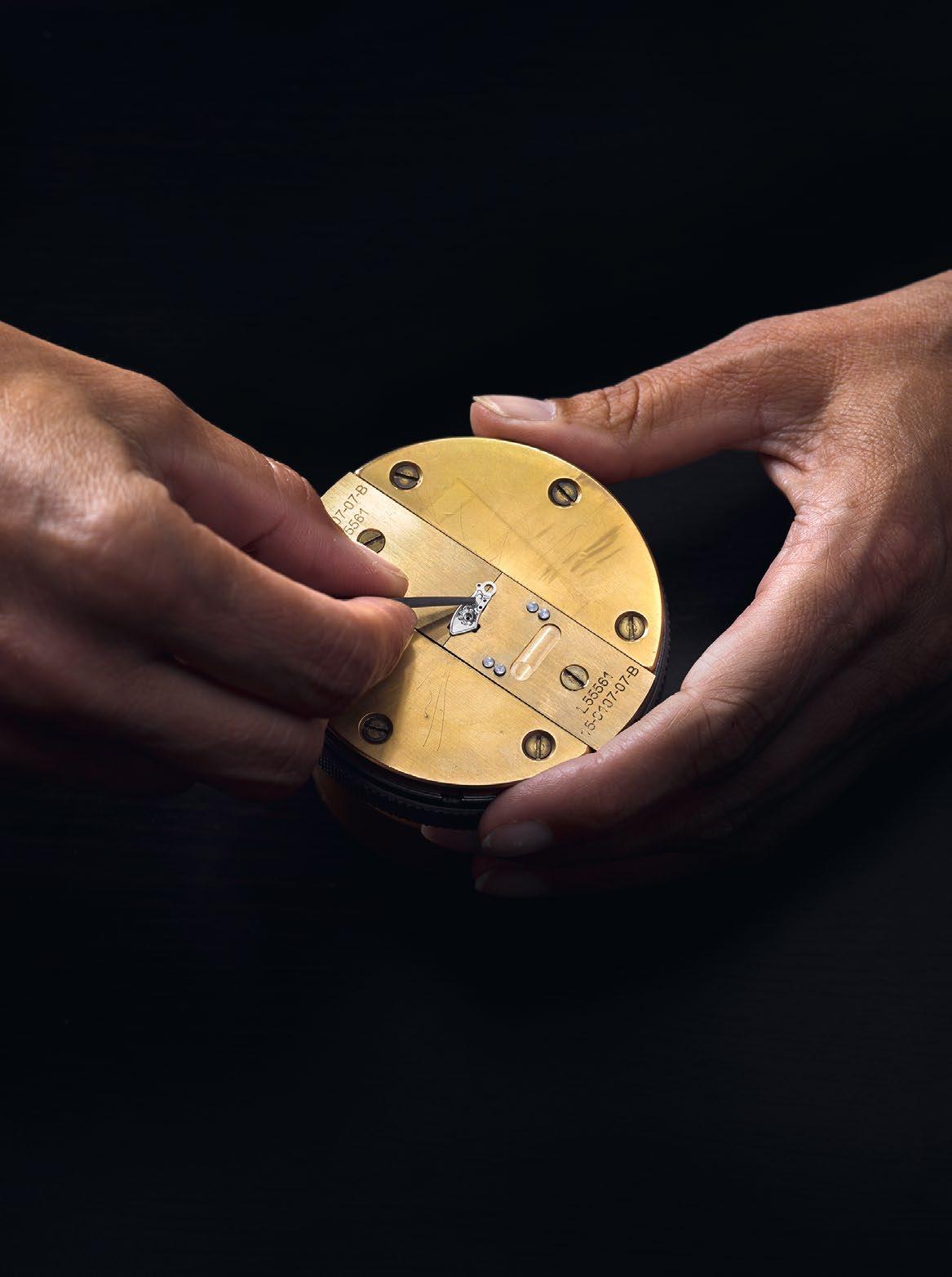 A. Lange
Söhne
A. Lange
Söhne
A treasure chest of wonders in the midst of that unique wonder in the world that is Venice, from April 10 to May 1 the second edition of Homo Faber was the destination of thousands of visitors from all over the world. The event was conceived by the Michelangelo Foundation, created in 2016 by Franco Cologni and Johann Rupert to celebrate and promote the crafts of art and fine craftsmanship. An impressive and evocative location - the rooms of the Cini Foundation on the island of San Giorgio - hosted a spectacular programme, divided into 15 events with 22 curators including internationally renowned visual artists, designers, architects, collectors and experts coordinated by Alberto Cavalli, executive director of the Michelangelo Foundation. Almost 900 works on display represented genuine proof of the talent of contemporary homo faber in a truly wide range of fields. Japan was the guest country and special focus of the event: in the Cenacolo Palladiano twelve of its greatest masters of art, considered Living National Treasures, part of the national cultural heritage, presented masterpieces created using ancient processing techniques - illustrated by short videos - from kimono to terracotta to pieces inlaid or embellished with over 100 layers of urushi lacquer. Bob Wilson transformed the Gandini pool into a theatrical stage that reveals the links between his theatrical productions and Japanese culture, with his Madame Butterfly’s objects dramatically staged. Also drawing great praise was the Magnae Chartae space set up in paper by Michele De Lucchi and paying homage to this material that here showed all its versatility, with origami structures that also involved the public, crepe paper dresses, sculptures in rice paper and cardboard, paintings in recycled paper. Equally admired were the tearoom with design objects from the five continents, the pavilion dedicated to the virtuosos of ceramics, the “flower garden” where a team of flower designers created wonderful bouquets specifically for the vases of Venini. Last but not least, “Details: Genealogies of Ornament”, a space for which the curator Judith Clark was inspired by St. Jerome in his study by Antonello da Messina, recreating 15 ateliers in which the artisans of as many luxury maisons gave practical demonstrations of their art: engraving, the crowning signature of masters from the German manufacturer A. Lange & Söhne, the artisan perfumery of Aquaflor, the silver hammering and chiselling of Buccellati, the haute couture of Dolce&Gabbana, the goldsmith perfection of Cartier and Van Cleef & Arpels, the high-art of watchmaking by Piaget, Jaeger-LeCoultre, Vacheron Constantin… The programme of events was completed by a series of themed itineraries to discover the workshops and artisan ateliers around Venice: a special opportunity to stroll along the calle and rii surrounded by talent and beauty.



Almost 900 works on display represent genuine proof of the talent of contemporary homo faber in a truly wide range of fields.
SIJE Singapore
International Jewelry Expo
Singapore, 14 / 17 July
• info: sije.com.sg
HKTDC Hong Kong
International Jewellery Show
Hong Kong, 29 July / 2 August
• info: hktdc.com
JA New York
New York, 14 / 16 August
• info: ja-newyork.com
Japan Jewellery Fair

Tokyo, 31 August / 2 September
• info: japanjewelleryfair.com
Bijorhca
Paris, 2 / 5 September • info: whosnext.com/bijorhca
Midora Leipzig
Leipzig, 3 / 5 September • info: midora.de
JWF - Jewellery & Watch and Fashion
Birmingham, 4 / 7 September • info: autumnfair.com
Vicenzaoro
Vicenza, 9 / 13 September • info: vicenzaoro.com
Madridjoya
Madrid, 15 / 18 September • info: ifema.es
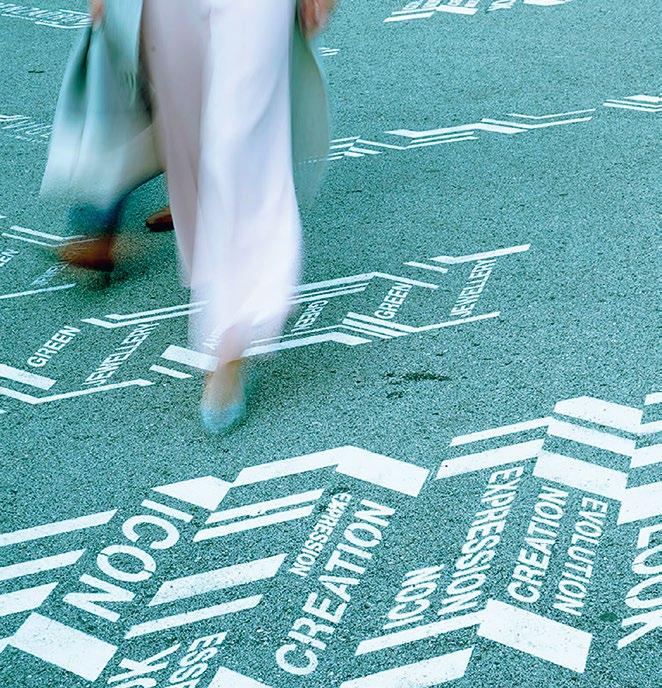
Homi Fashion & Jewels
Milan, 16 / 19 September • info: homifashionjewels.com
White Milano
Milan, 22 / 25 September • info: whiteshow.com
Portojóia
Oporto, 22 / 25 September • info: portojoia.exponor.pt
Intergem
Idar-Oberstein, 23 / 25 September • info: intergem.de
Mineralientage - Gemworld
Munich, 30 September / 2 October • info: munichshow.de
JIS - Jewelers International Showcase
Miami Beach, 30 September / 3 October • info: jisshow.com

Camera
Until 26 June
Masterworks of Modern Photography 1900-1940
The Thomas Walther Collection at MoMA, NY camera.to


Cobra Museum of Modern Art
Until 26 June
Korda: Cuba, Che, Glamour

cobra-museum.nl
Palazzo Roverella
Until 26 June
Kandinskij
L’Opera
1900-1940
palazzoroverella.com
Palazzo Reale
Until 26 June
Joaquin Sorolla

Pittore di Luce
palazzorealemilano.it
De Young Museum of Fine Arts
Until 10 July
Alice Neel: People

Come First
deyoung.famsf.org
Musée d’Orsay
Until 17 July
Gaudí
musee-orsay.fr
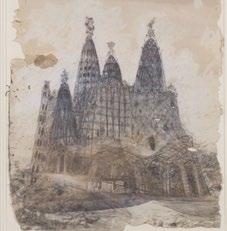
Palazzo Cipolla
Until 17 July
London Calling: British Contemporary Art, from David Hockney to Idris Khan
fondazioneterzopilastrointernazionale.it
National Gallery
Until 31 July
The Credit Swisse Exhibition: Raphael nationalgallery.org.uk

Mudec
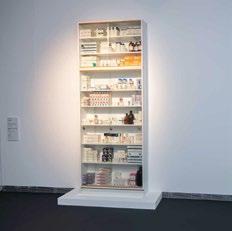
Until 31 July
Marc Chagall - A Tale of Two Worlds mudec.it


Haus der Kunst
Until 31 July
Fujiko Nakaya.
Nebel Leben
hausderkunst.de
Fondazione Prada
Until 22 August

Useless Bodies? Elmgreen & Dragset
fondazioneprada.org
Tate Modern Until 29 August
Surrealism beyond Borders tate.org.uk
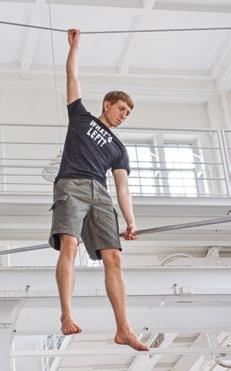
The Fitzwilliam Museum
Until 29 August
Hockney’s Eye
The Art and Technology of Depiction fitzmuseum.cam.ac.uk
Albertina Modern
Until 4 September
Ai Weiwei: In Search of Humanity albertina.at

C/O Berlin
Until 9 September
Bieke Depoorter: Agata / Michael. A chance encounter co-berlin.org
MoMA
Until 10 September
Matisse - The Red Studio
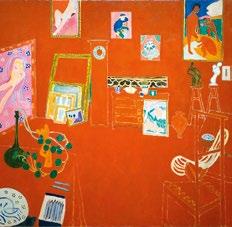
moma.org
The Wallace Collection


Until 16 October
Inspiring Walt Disney: the Animation of French Decorative Arts

wallacecollection.org
Tate Britain
Until 16
October
Cornelia Parker tate.org.uk
*Event dates are subject to change or cancellation. Please check the status of your event in the website. _not




